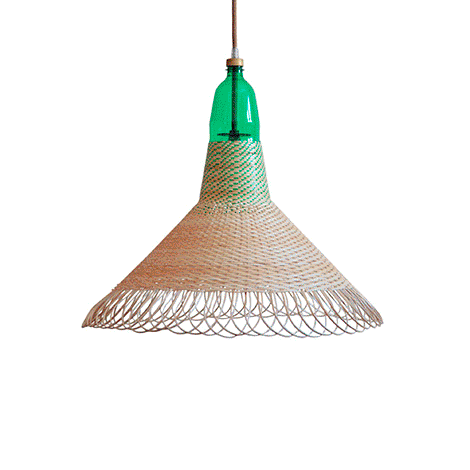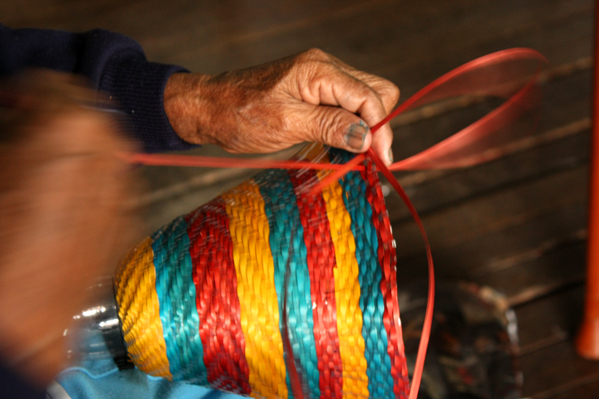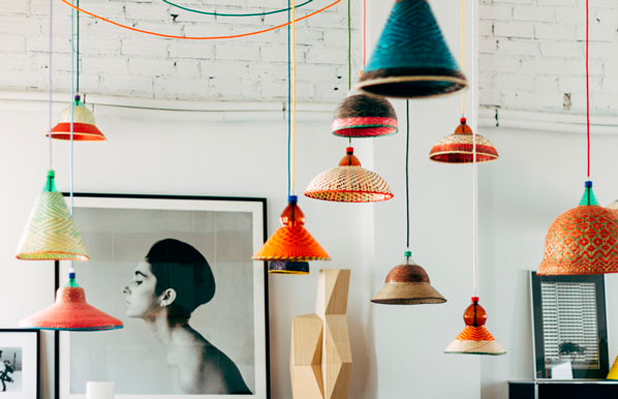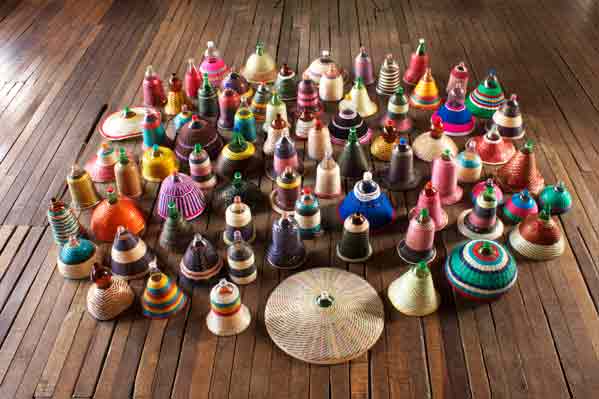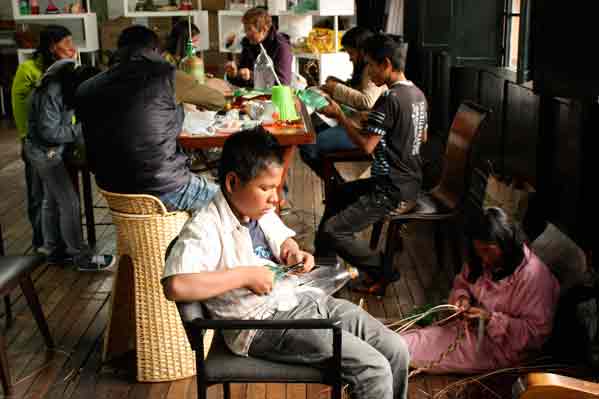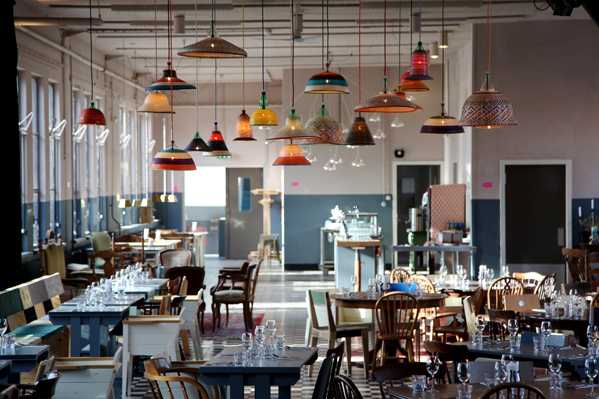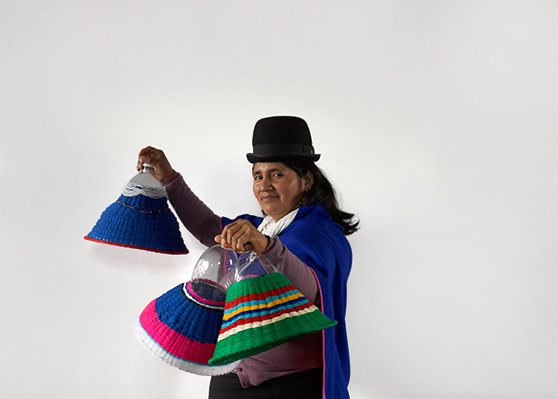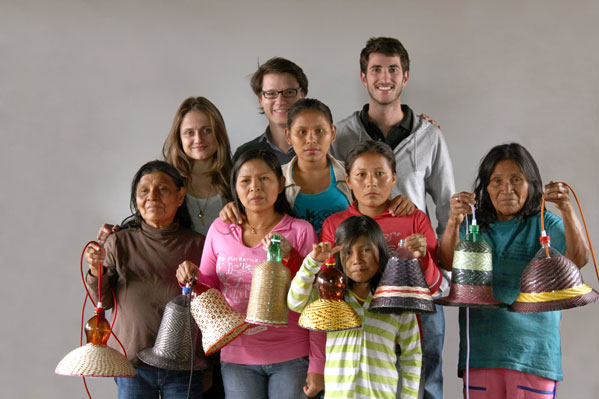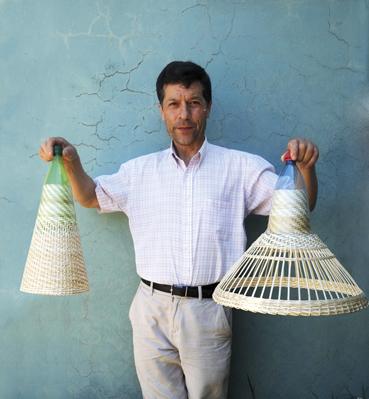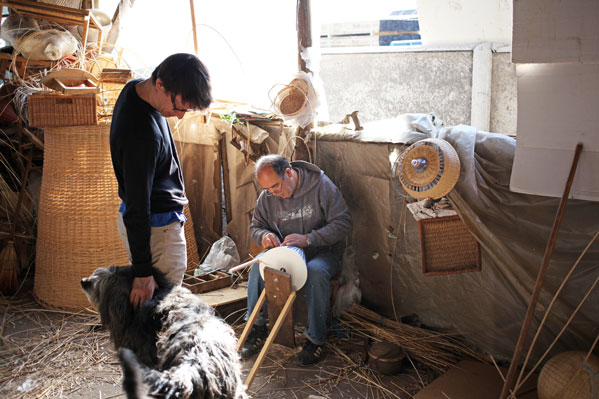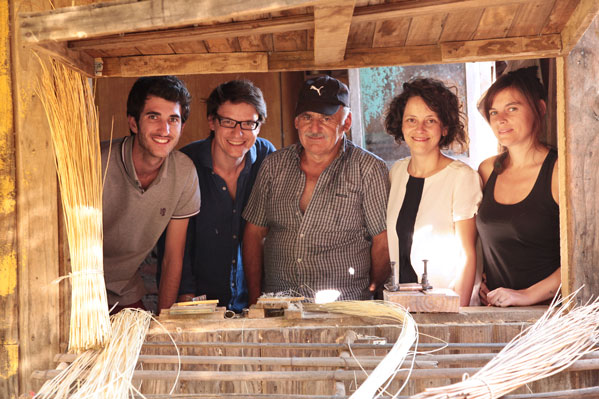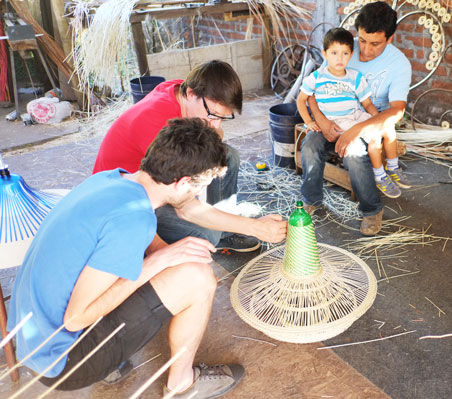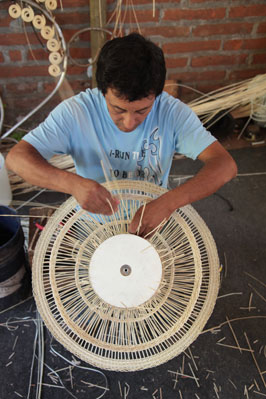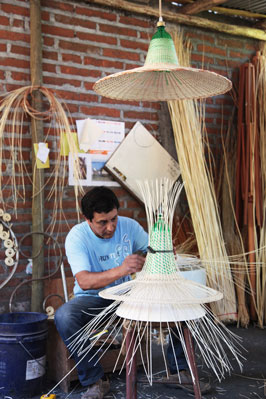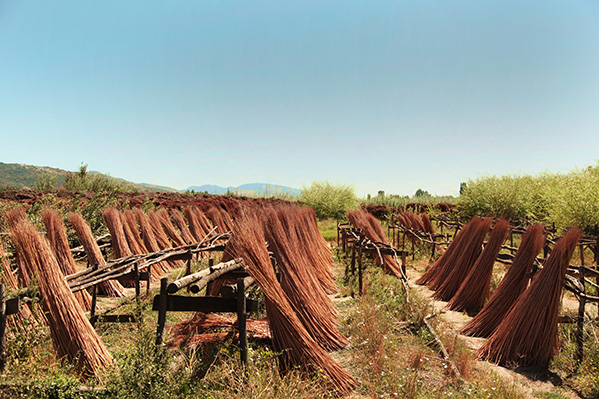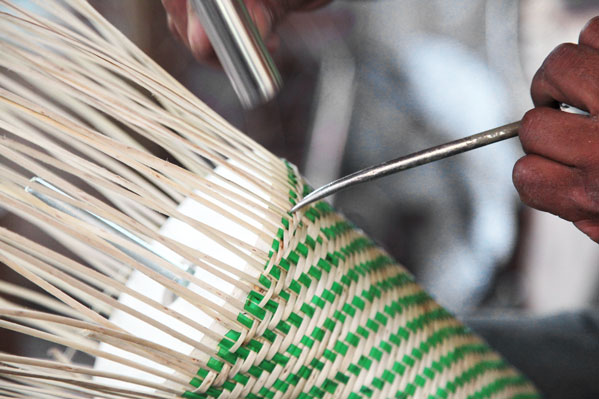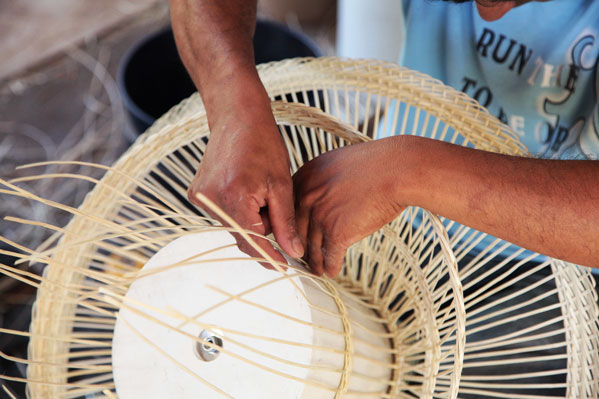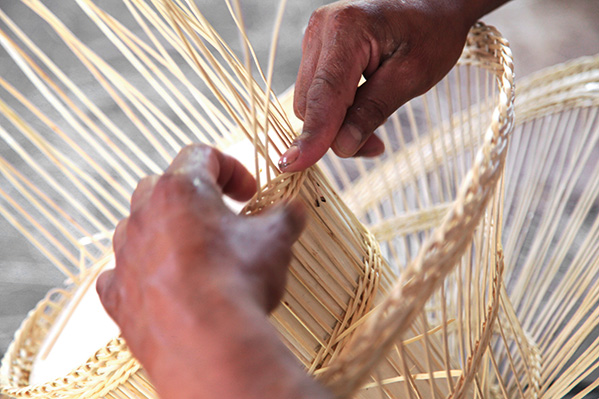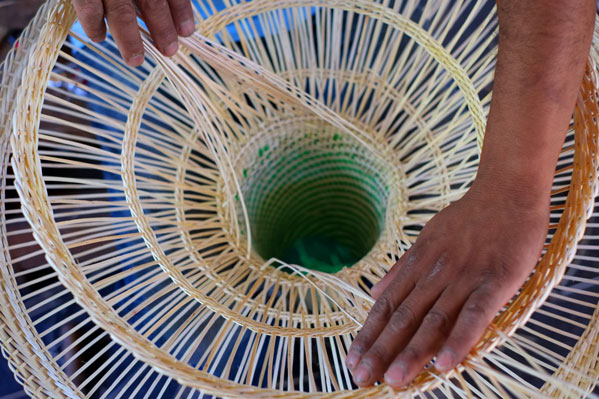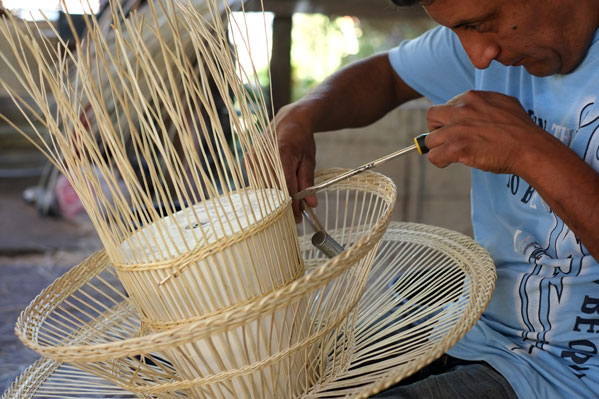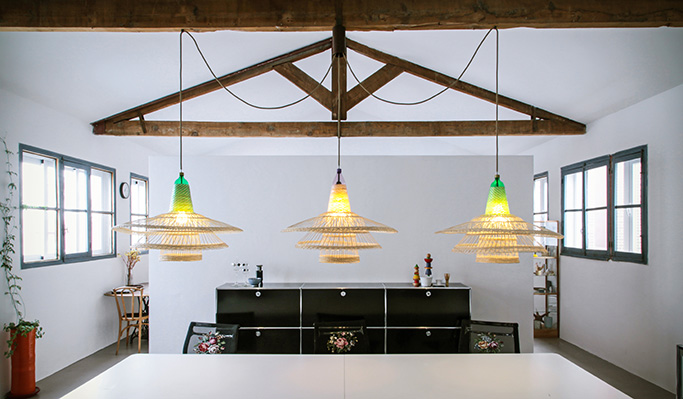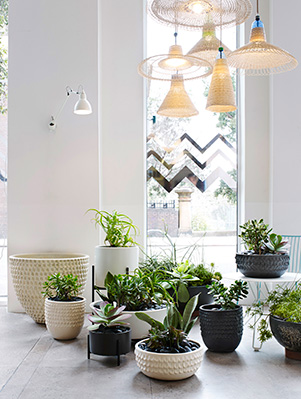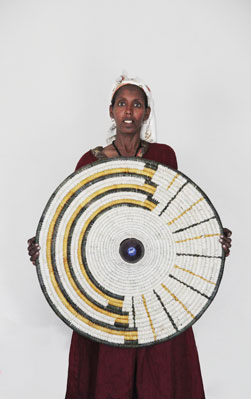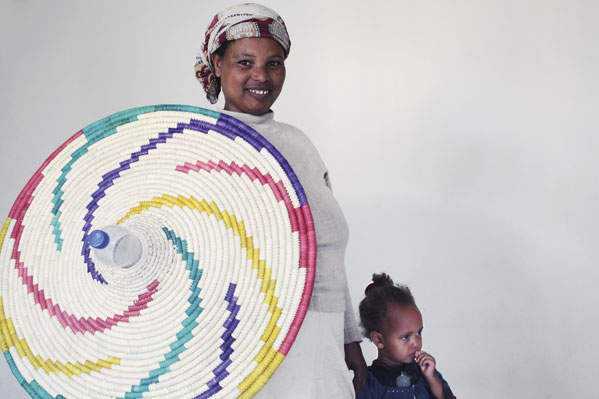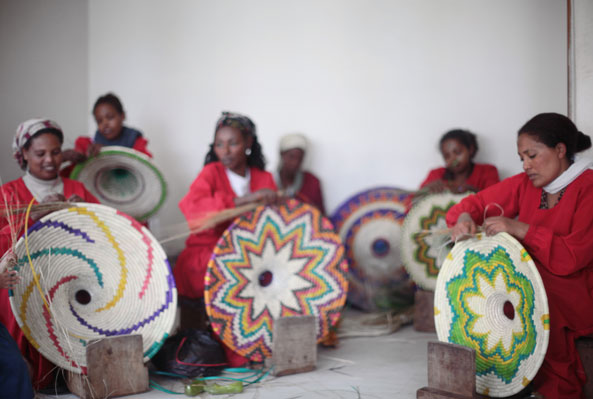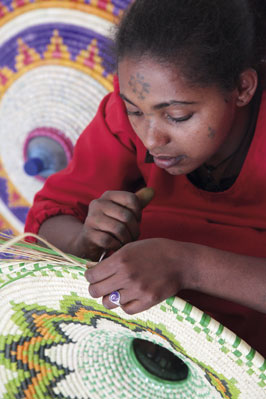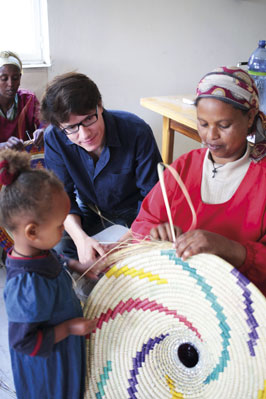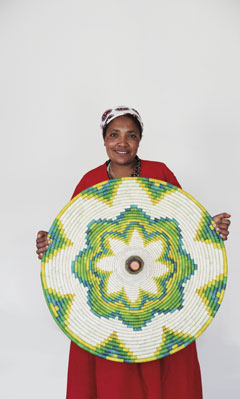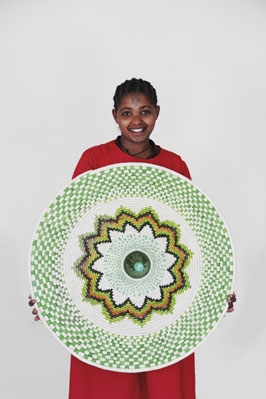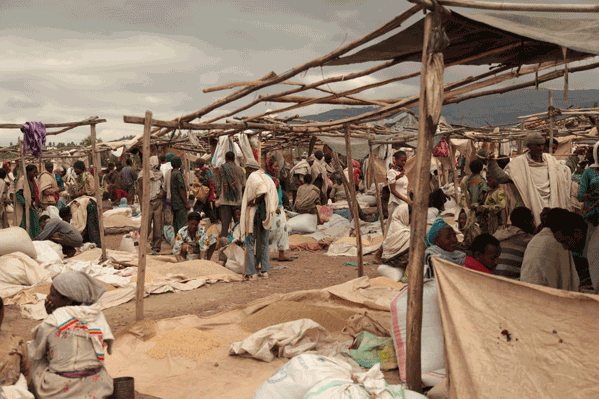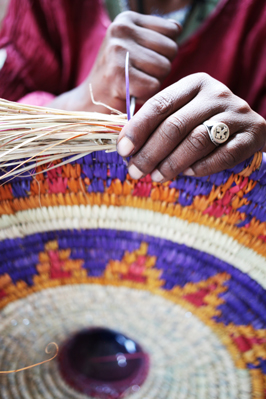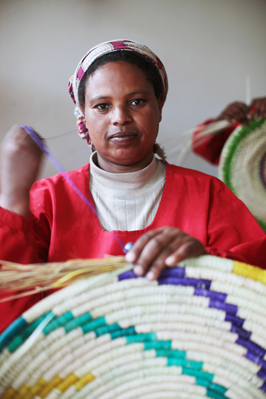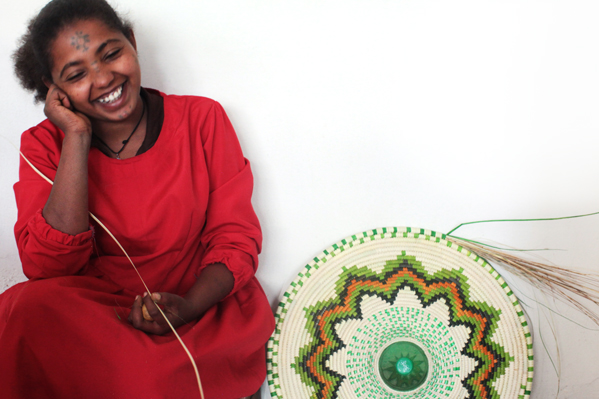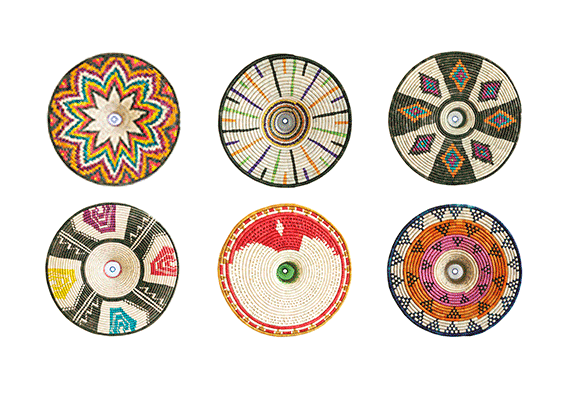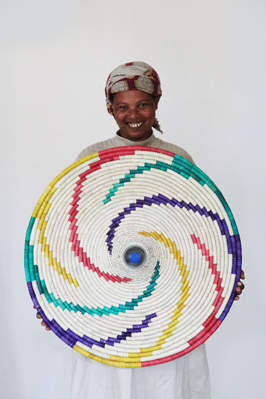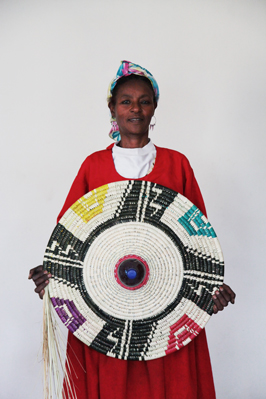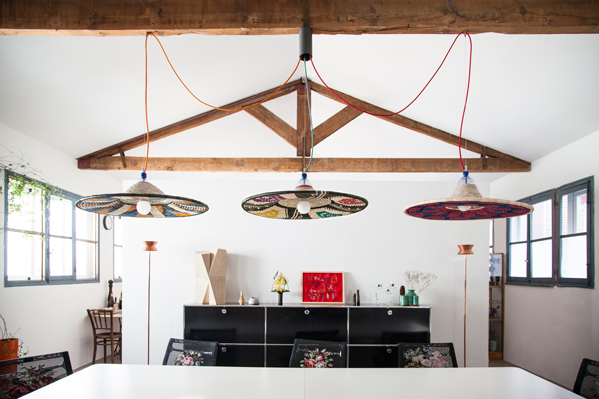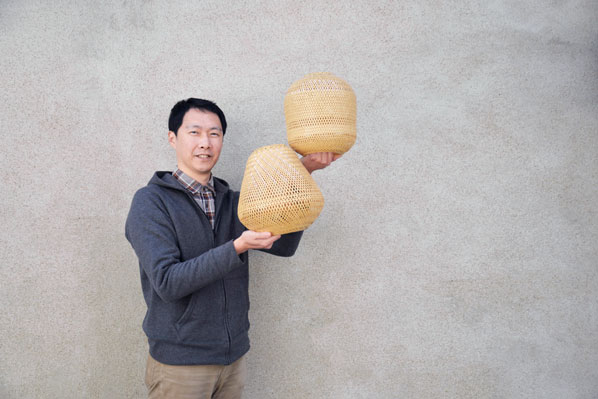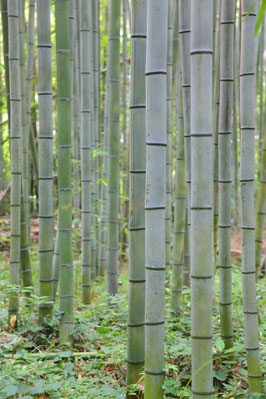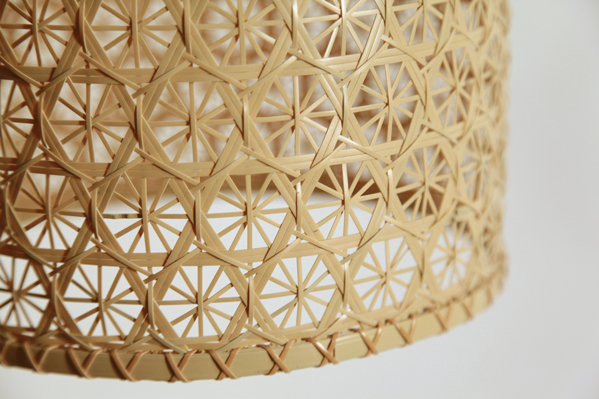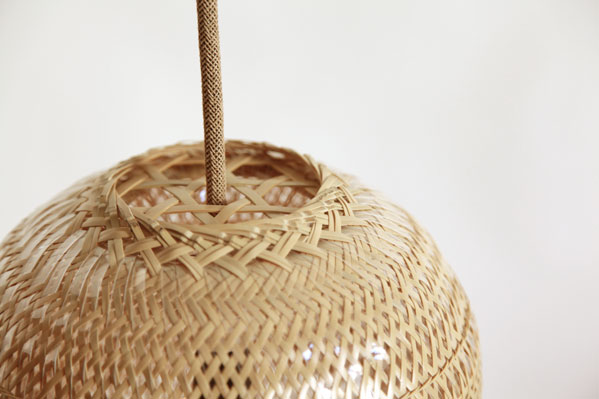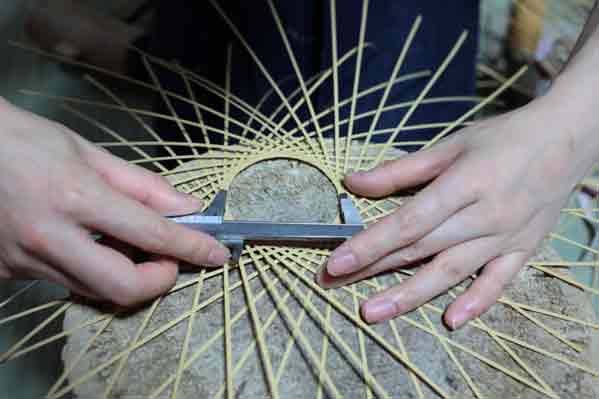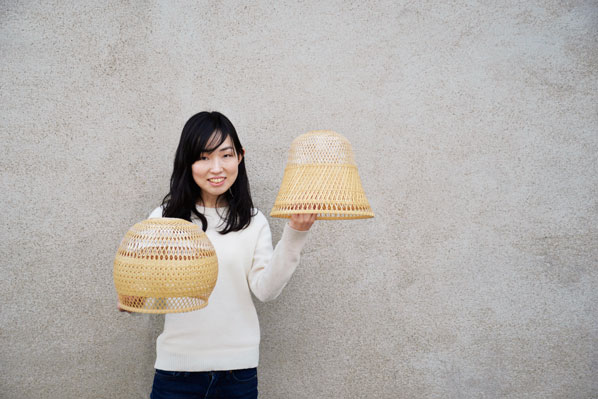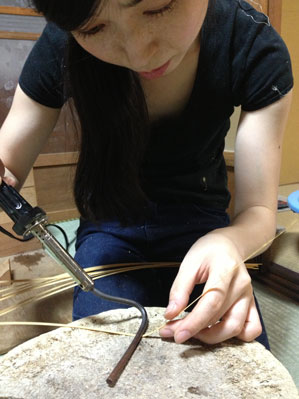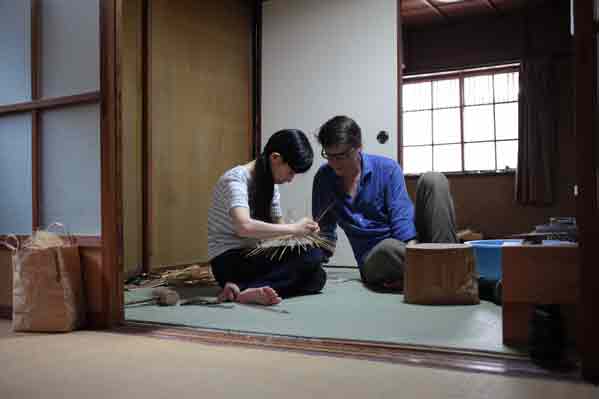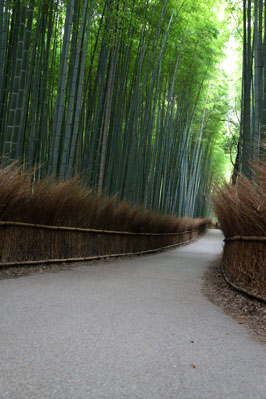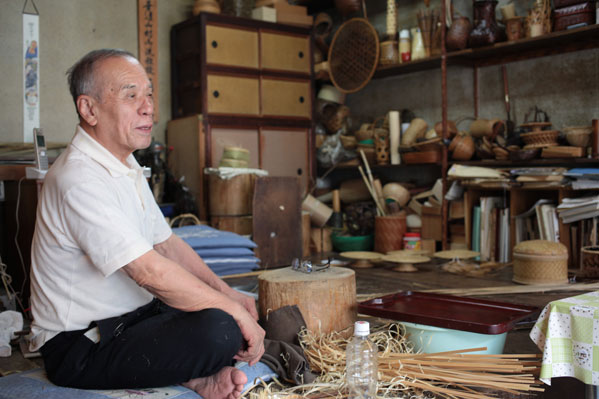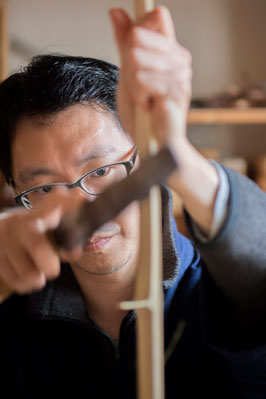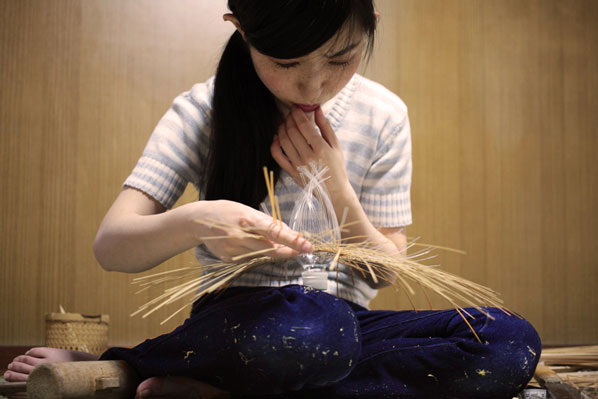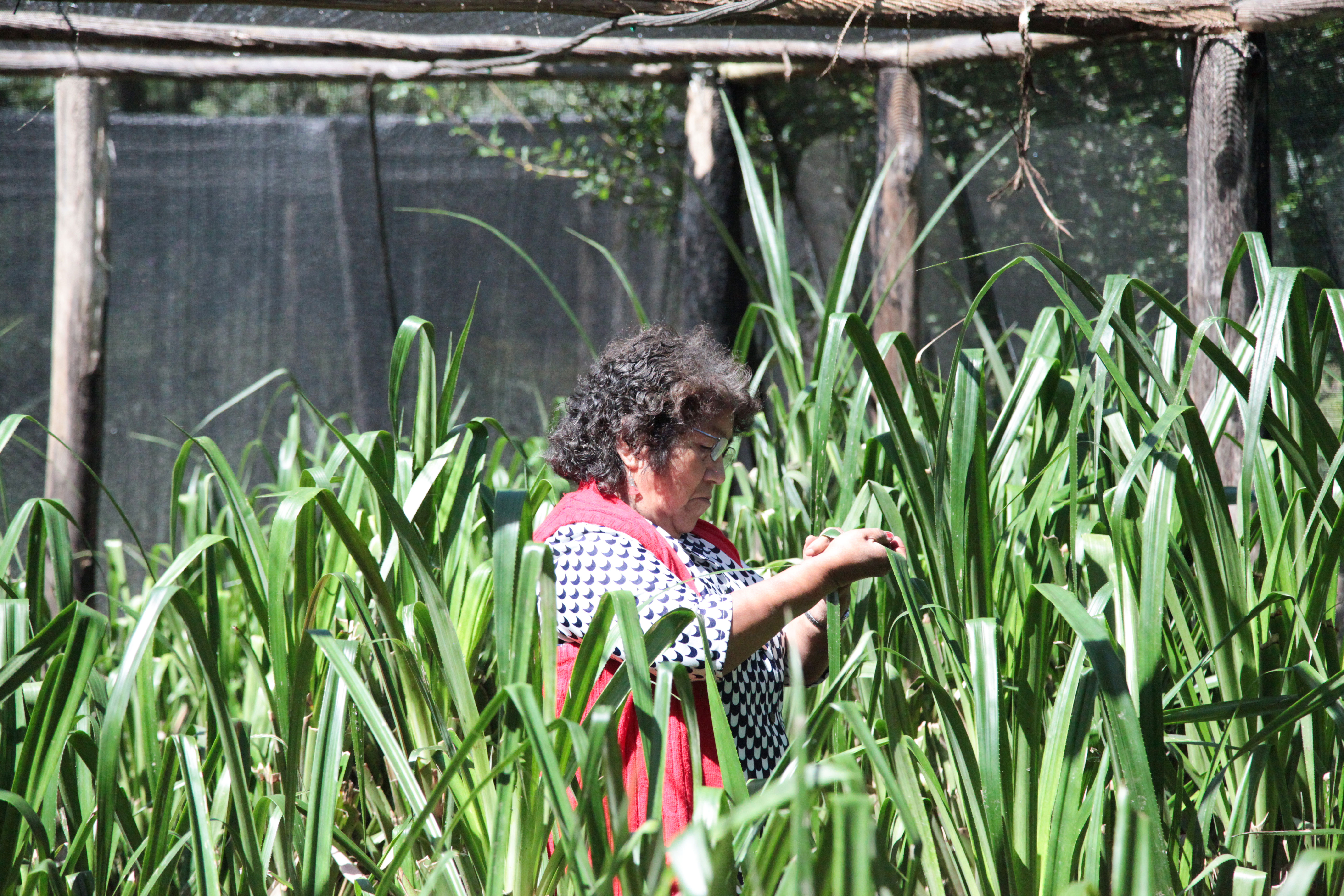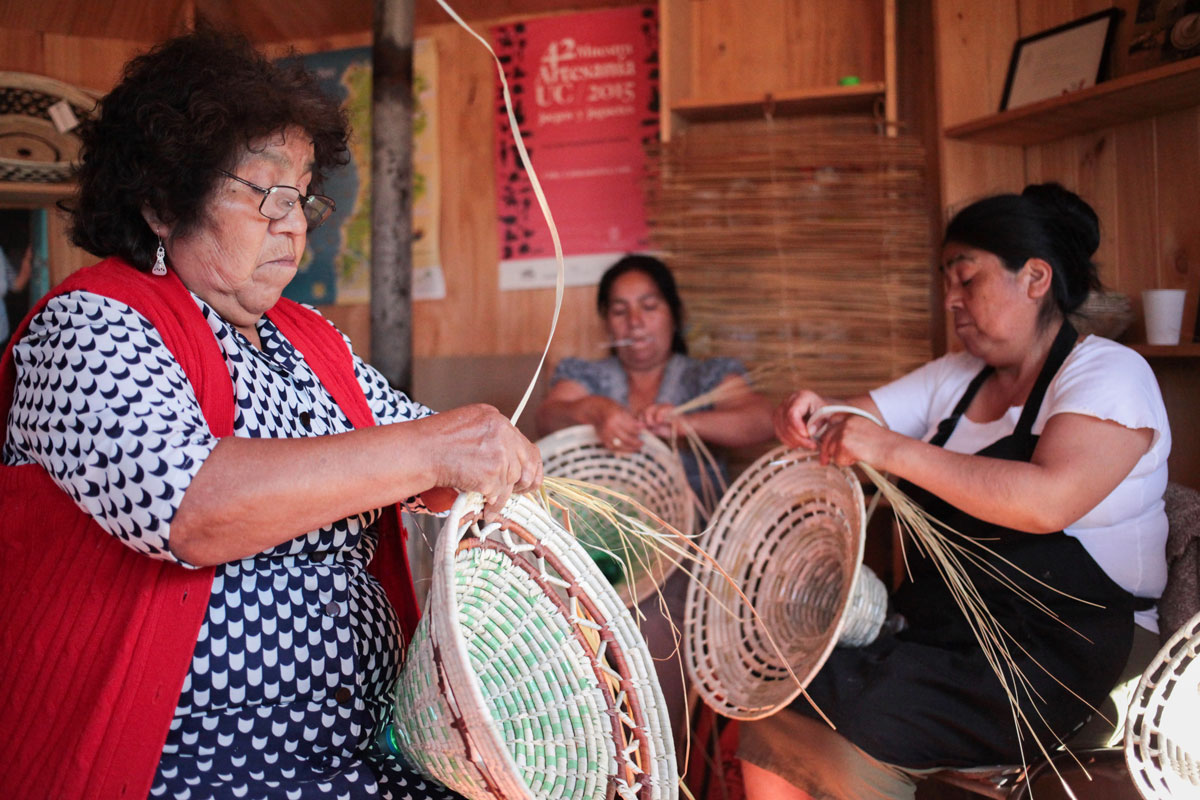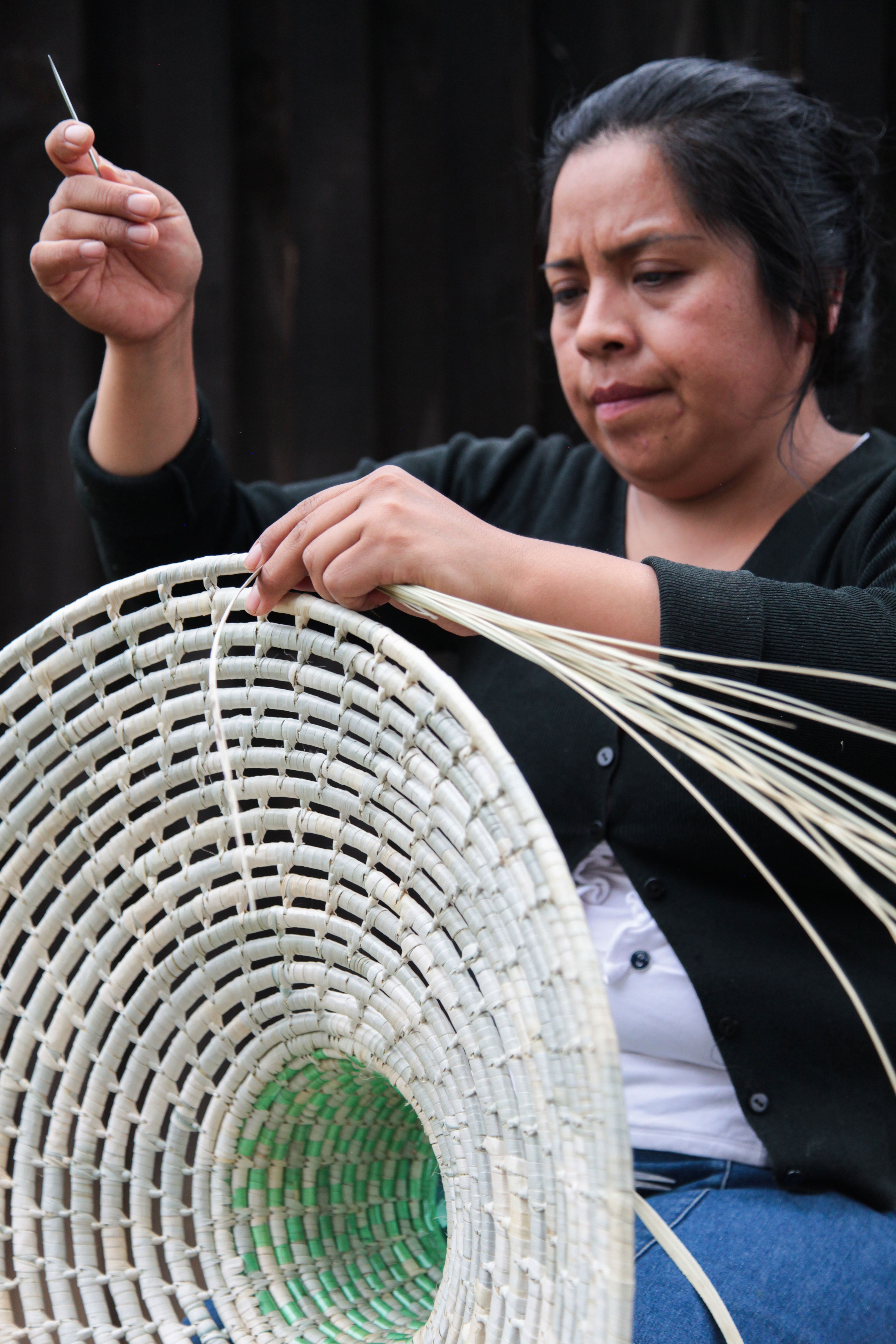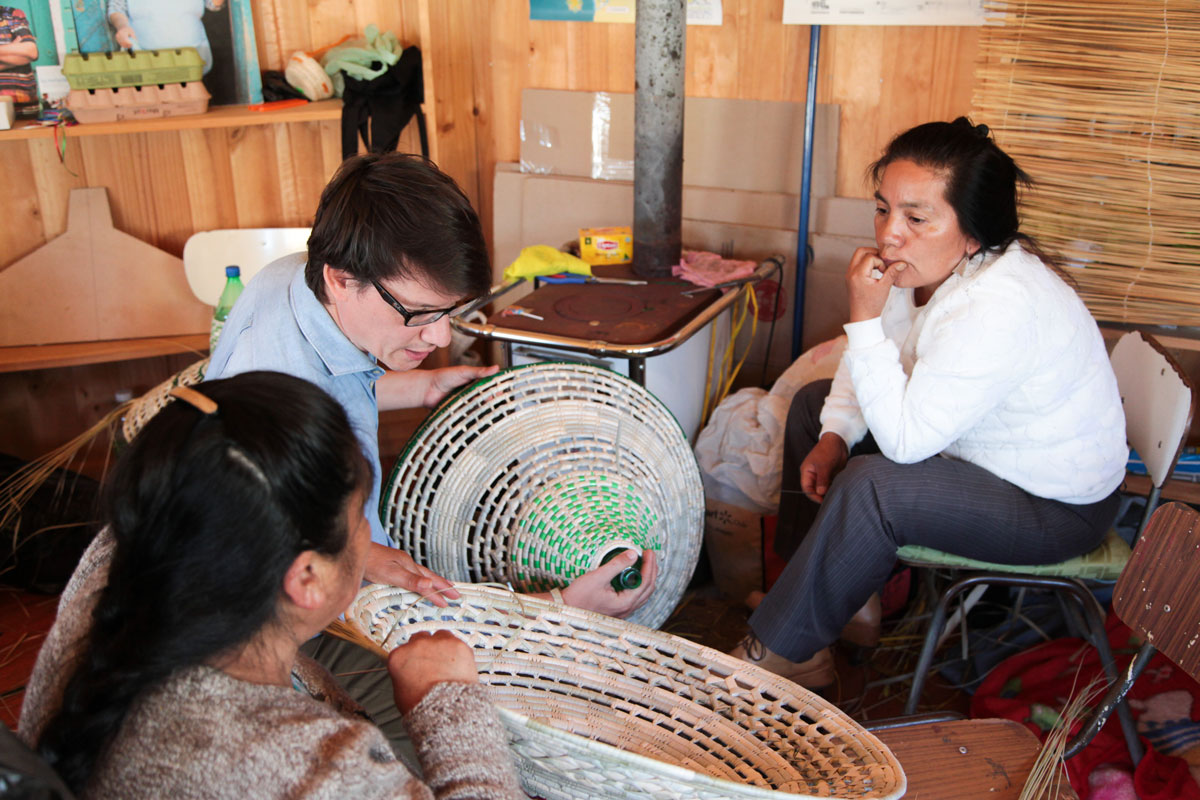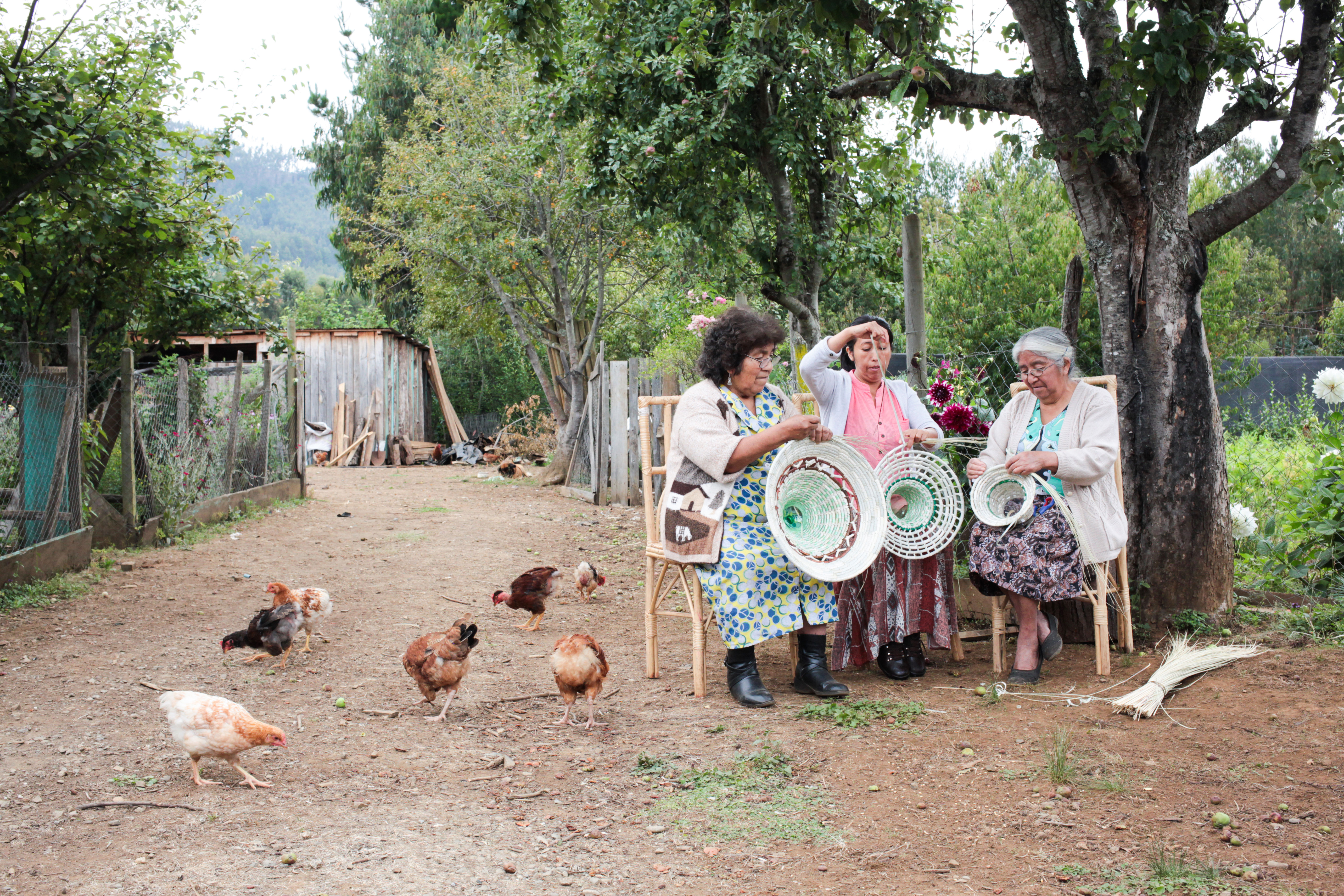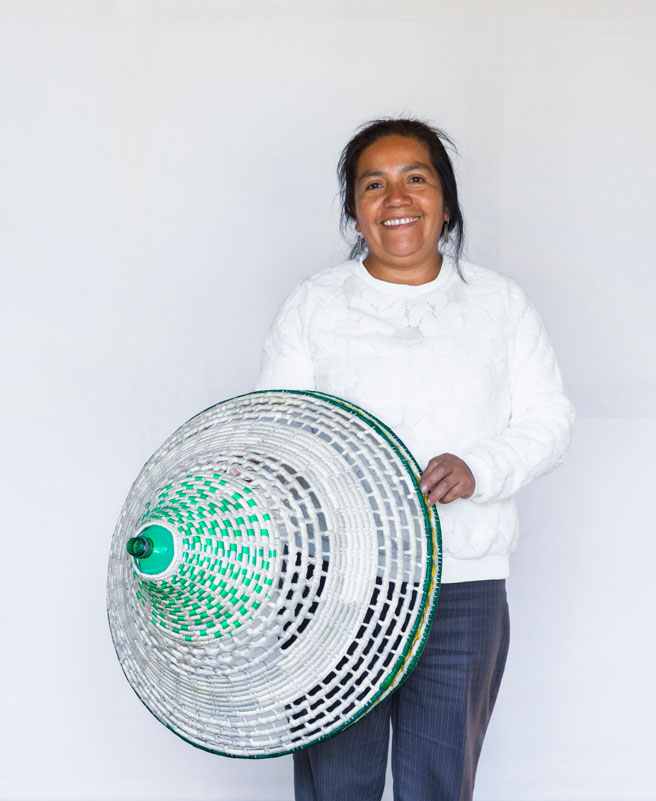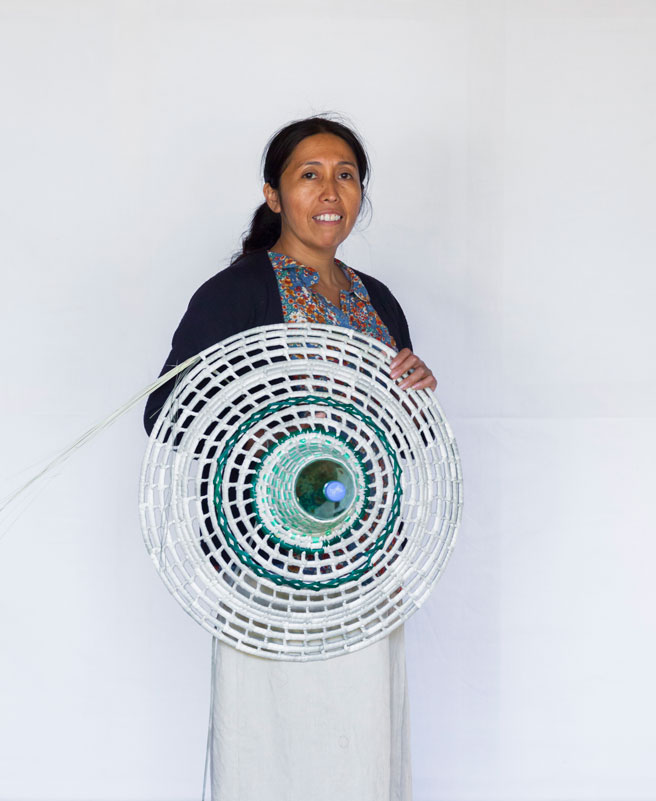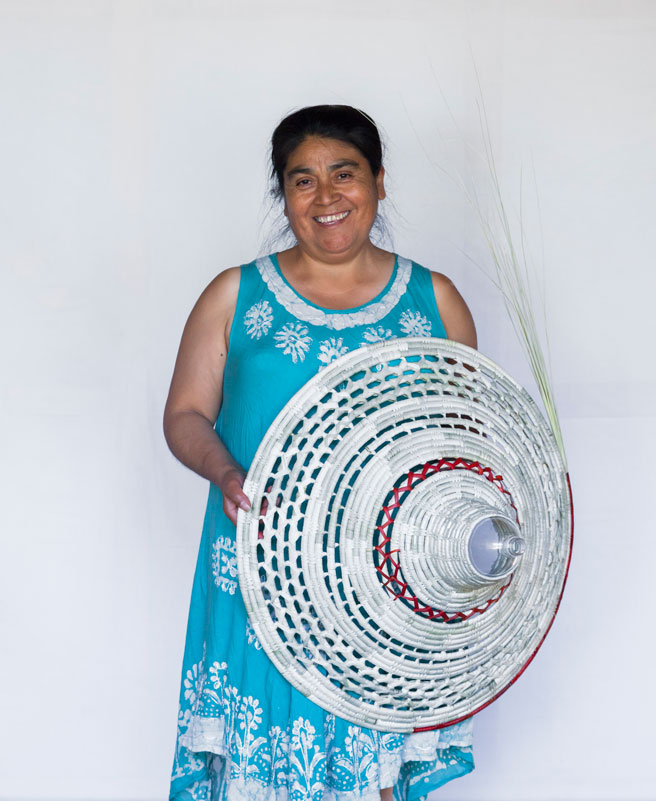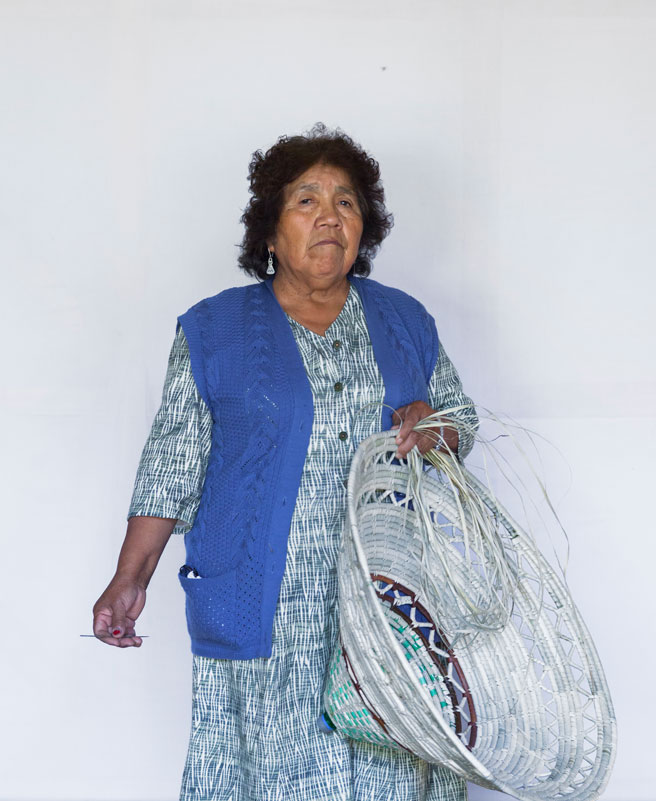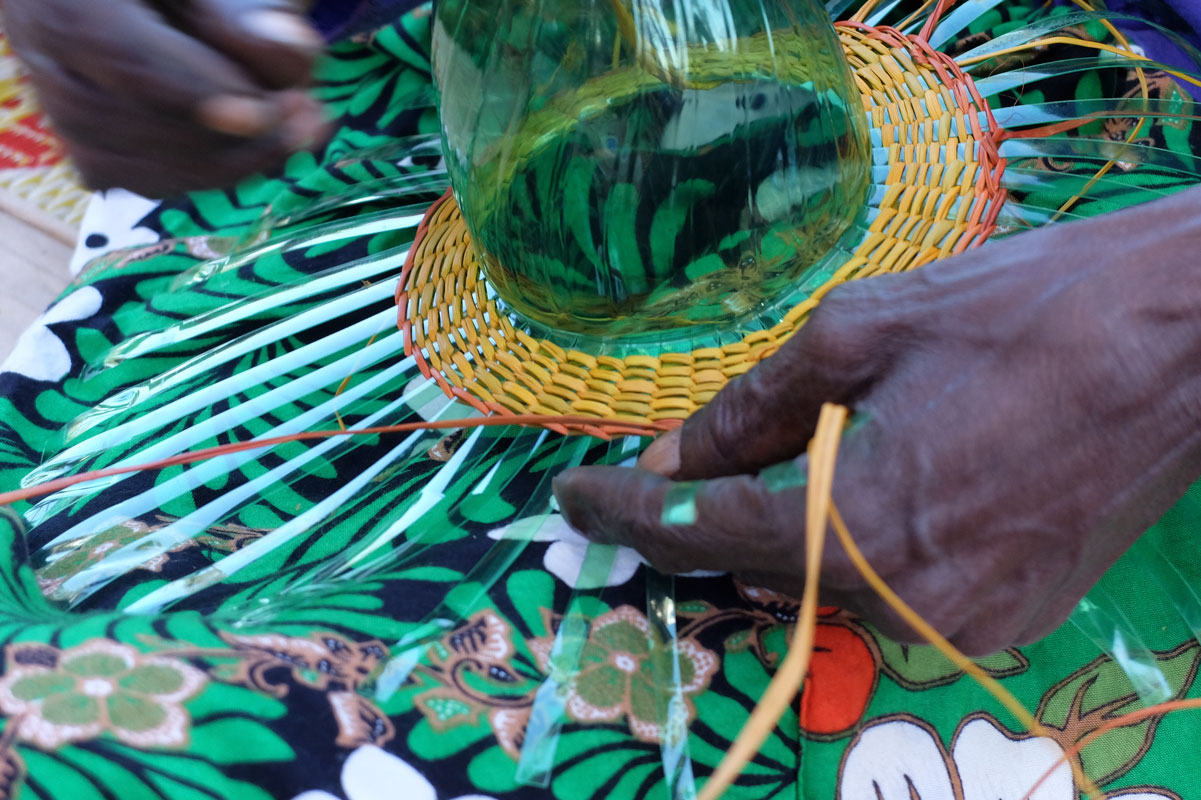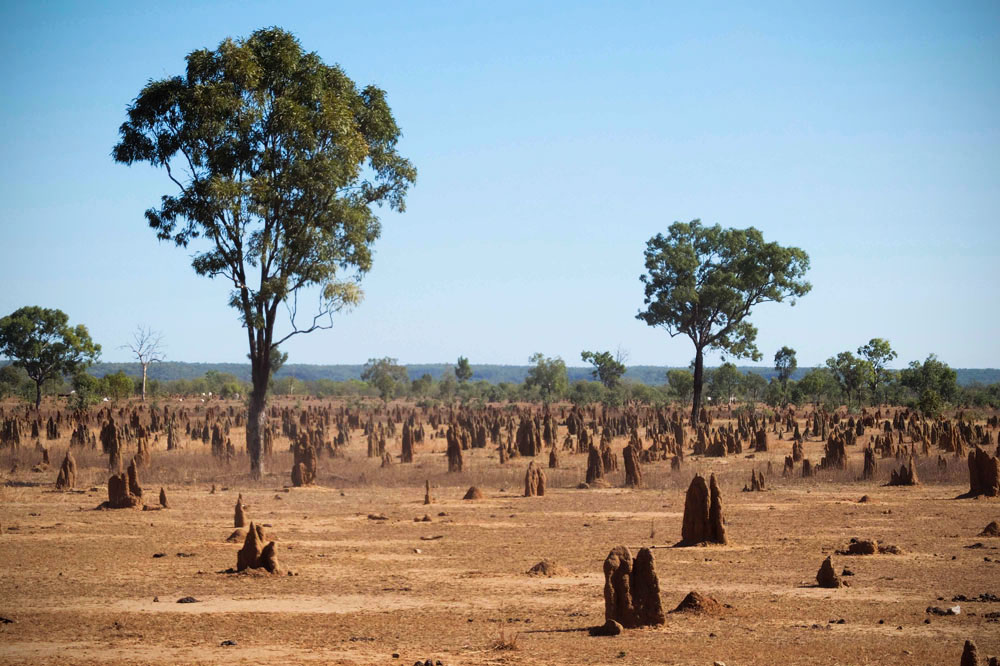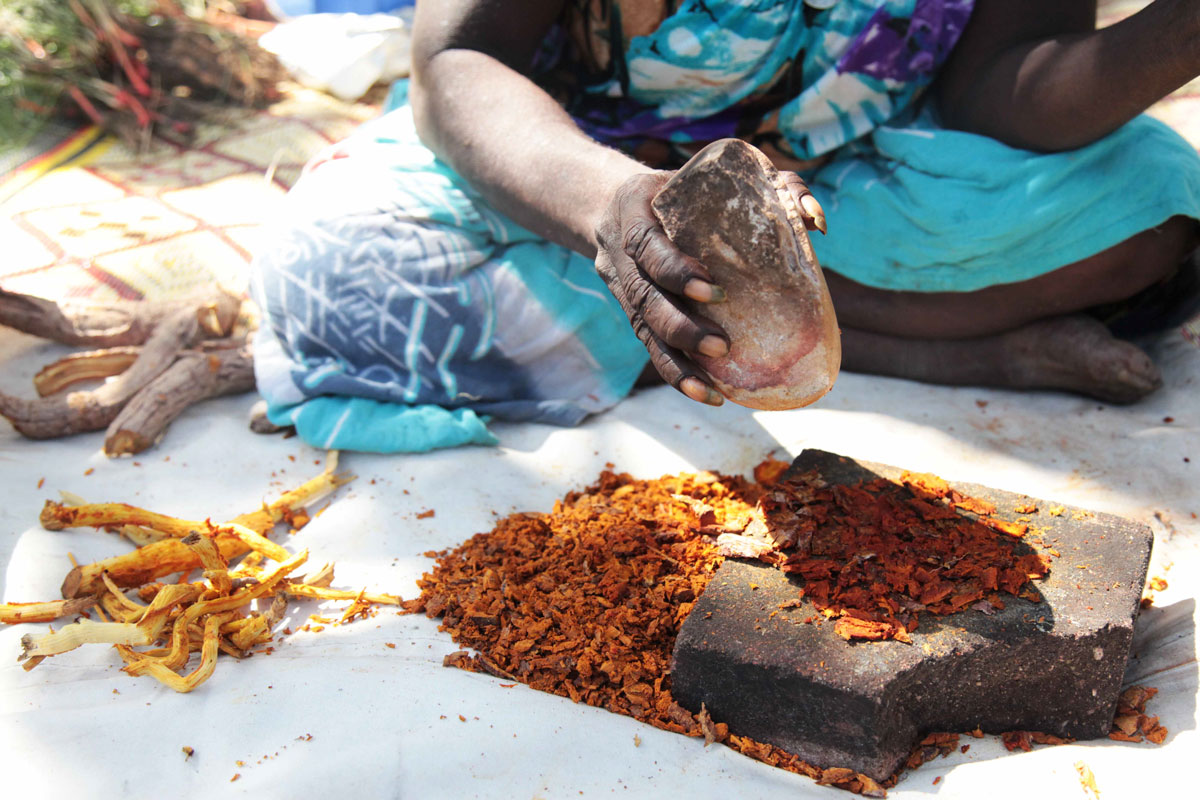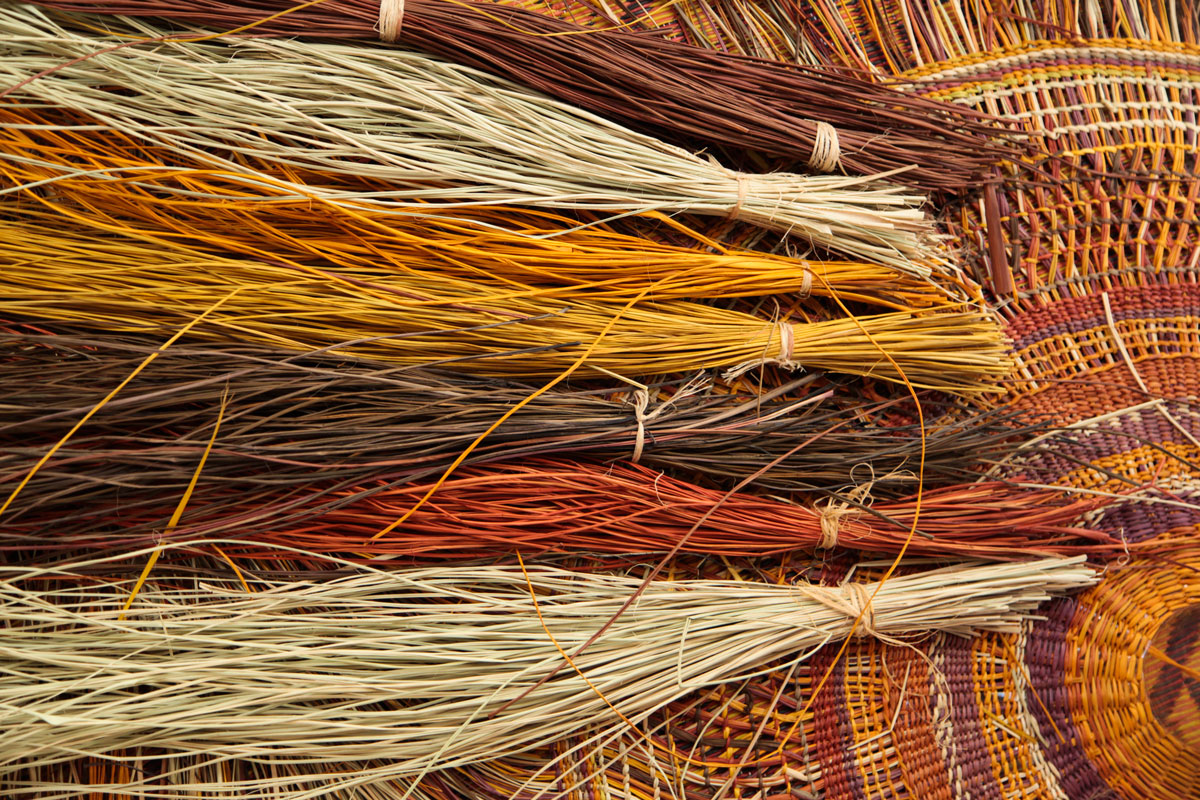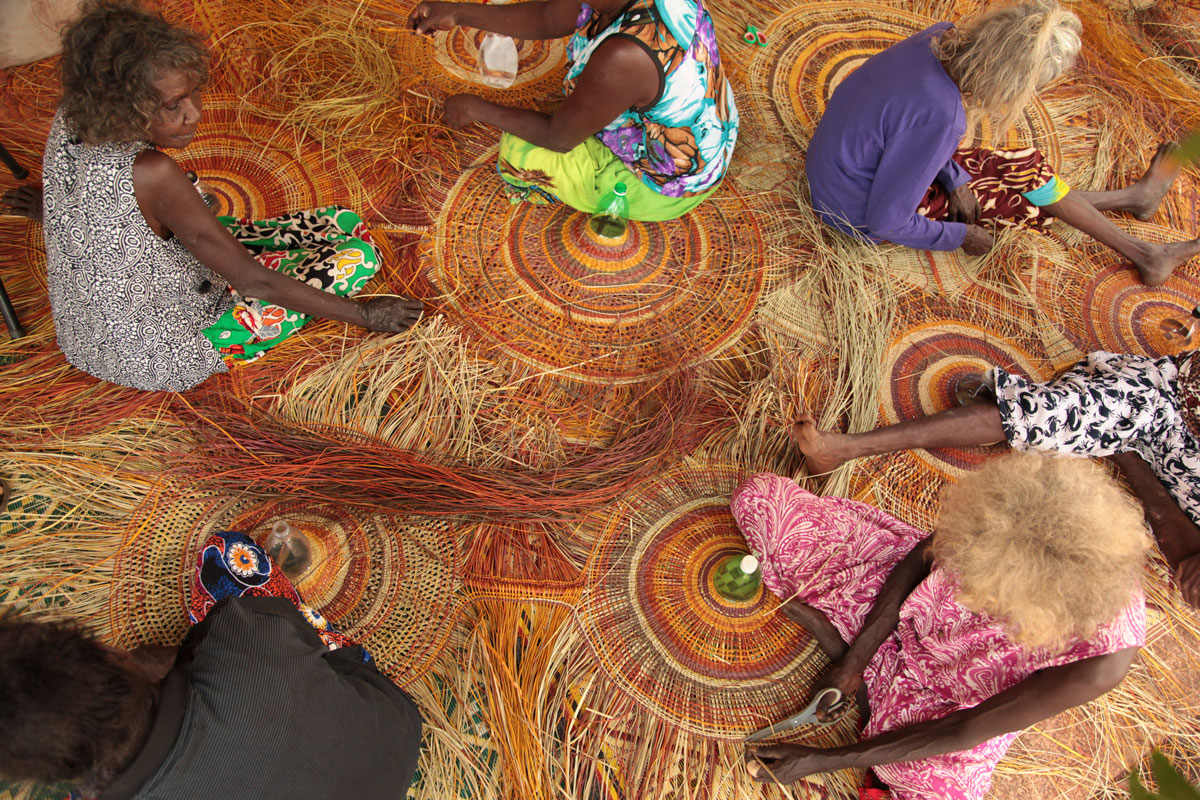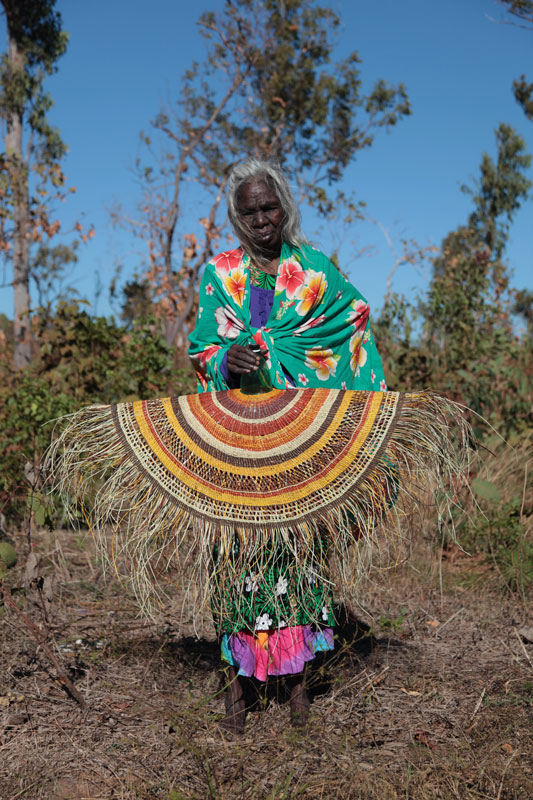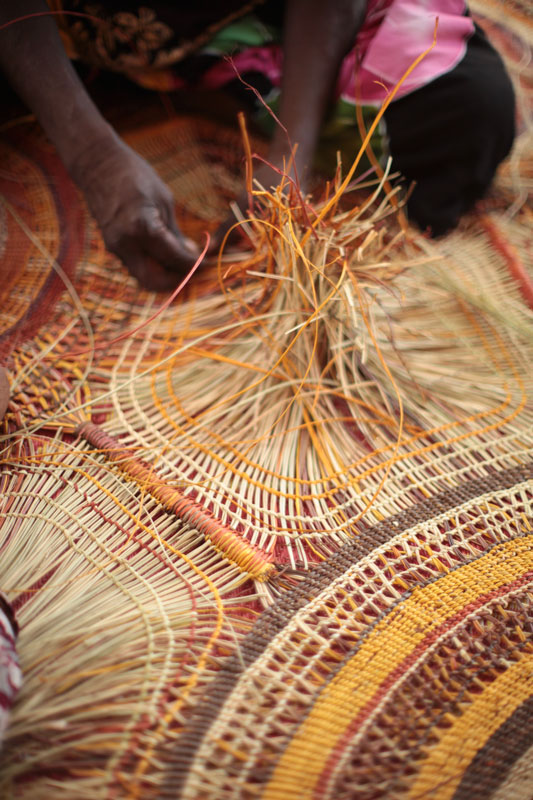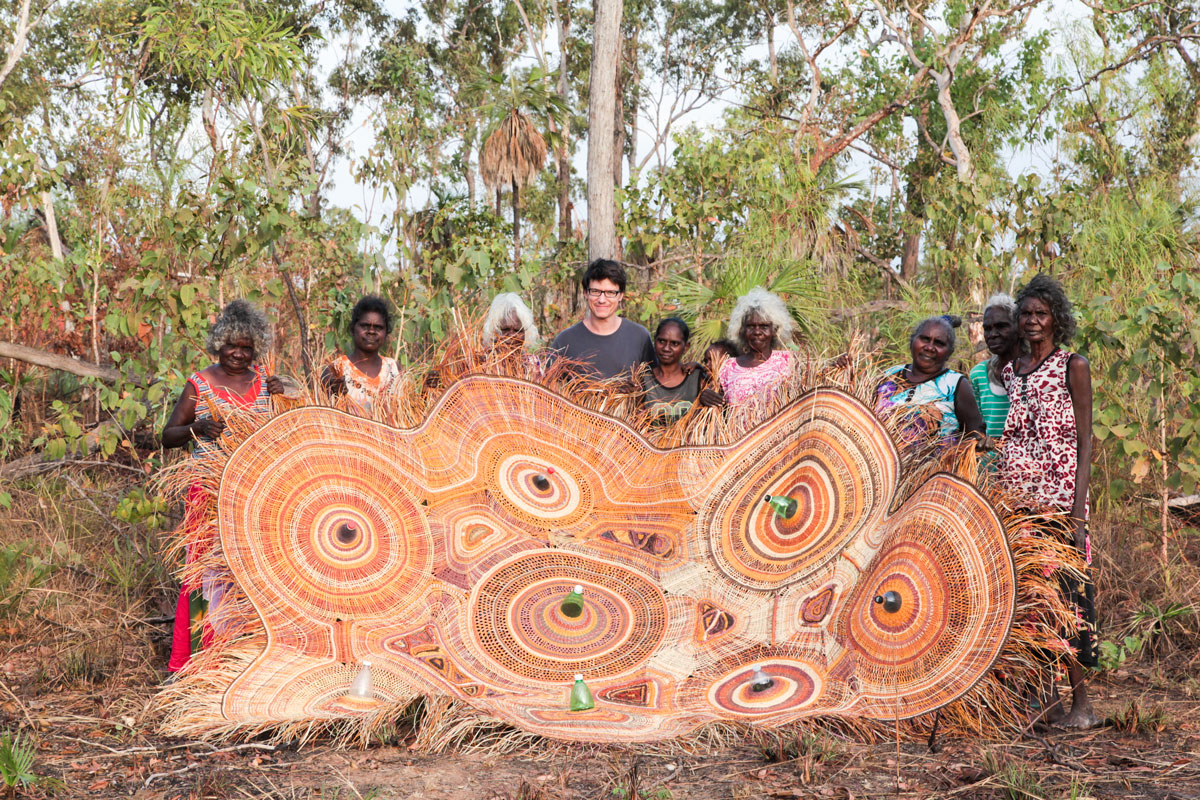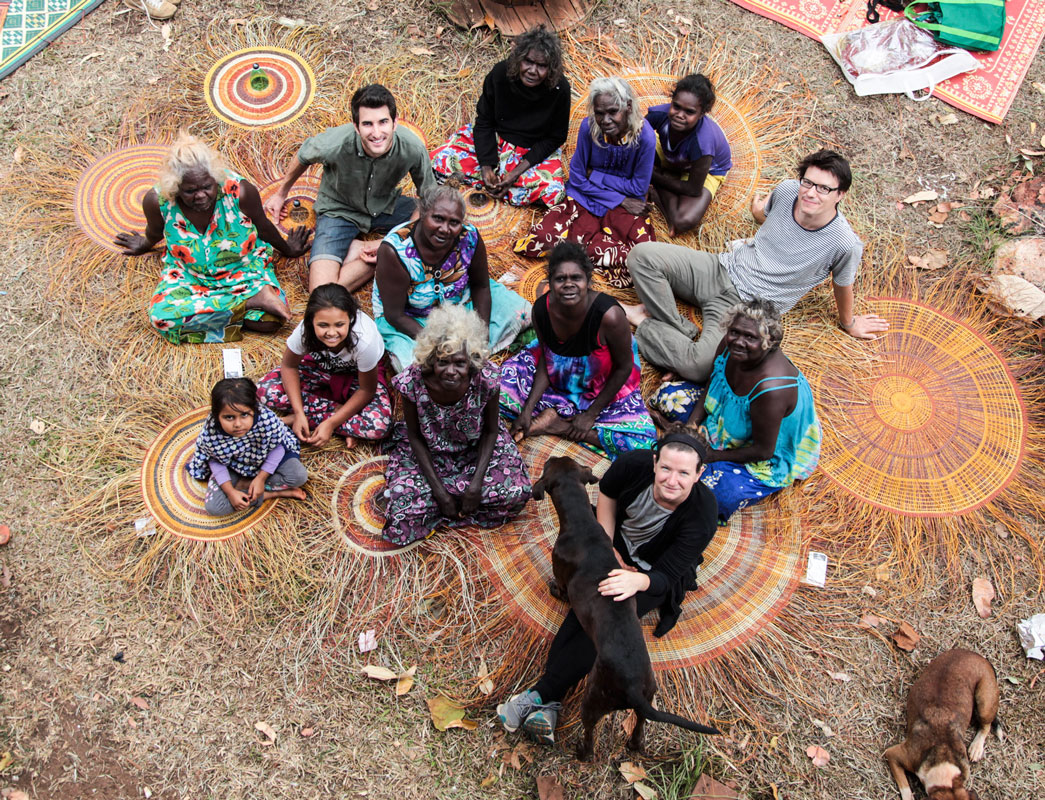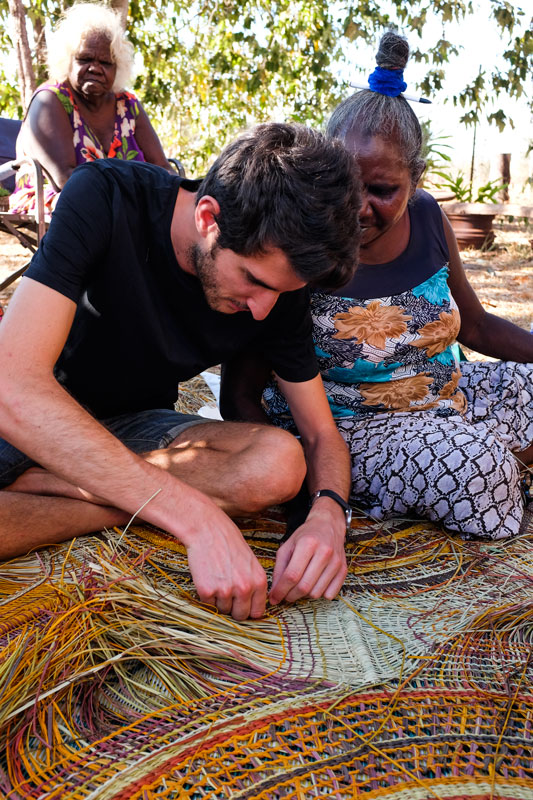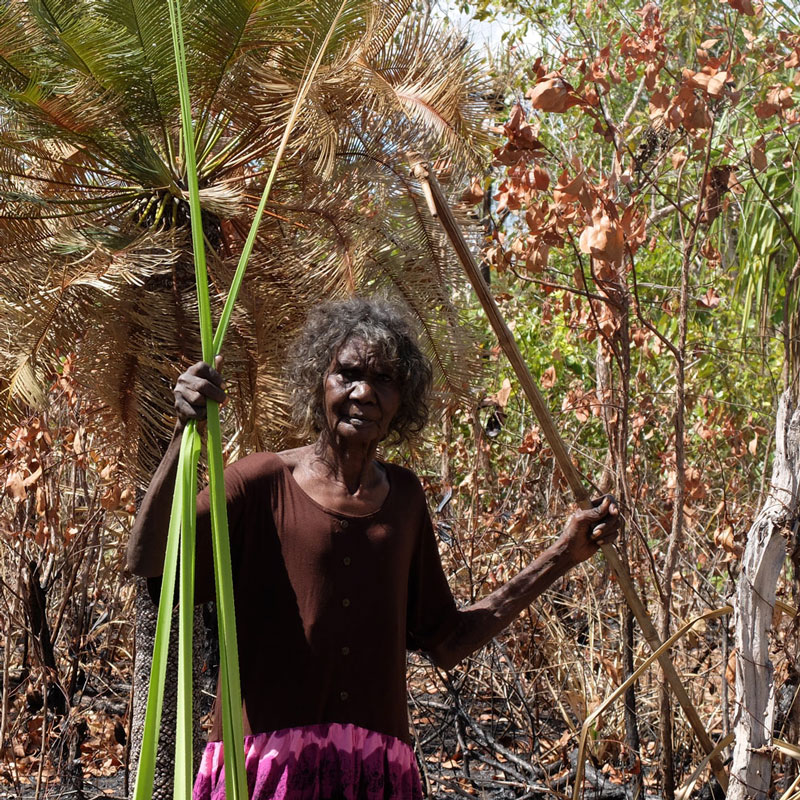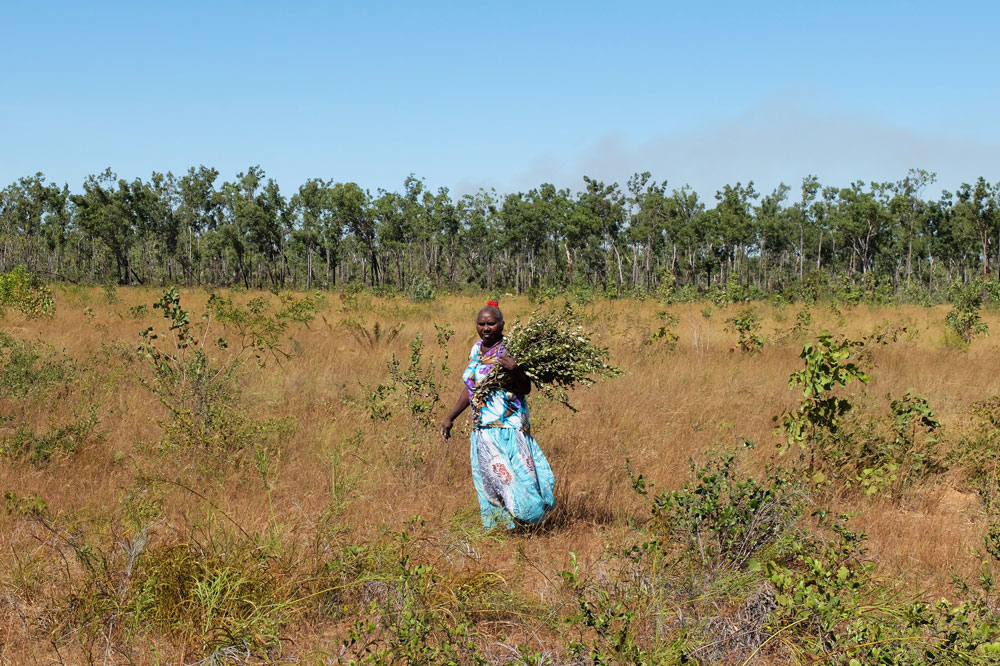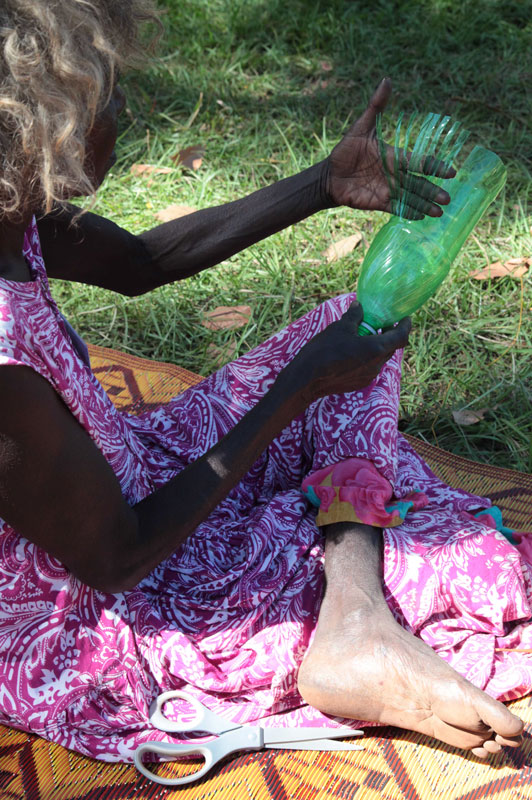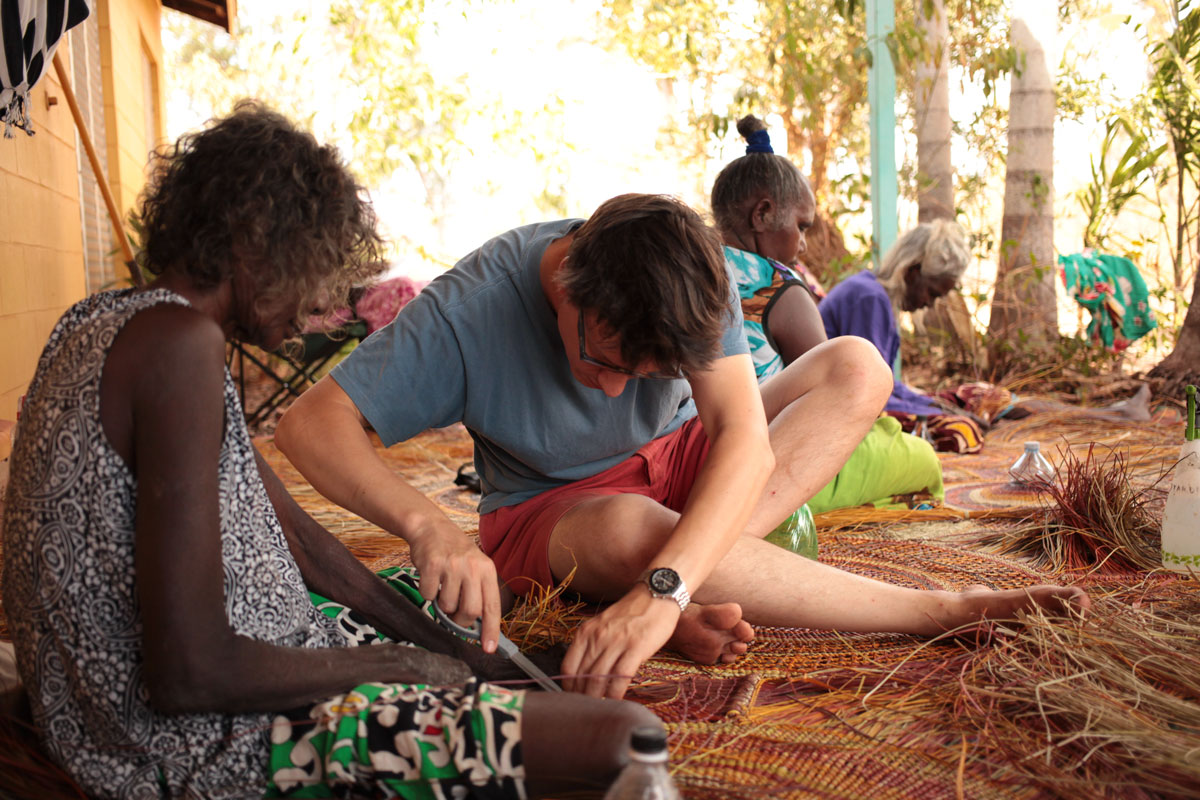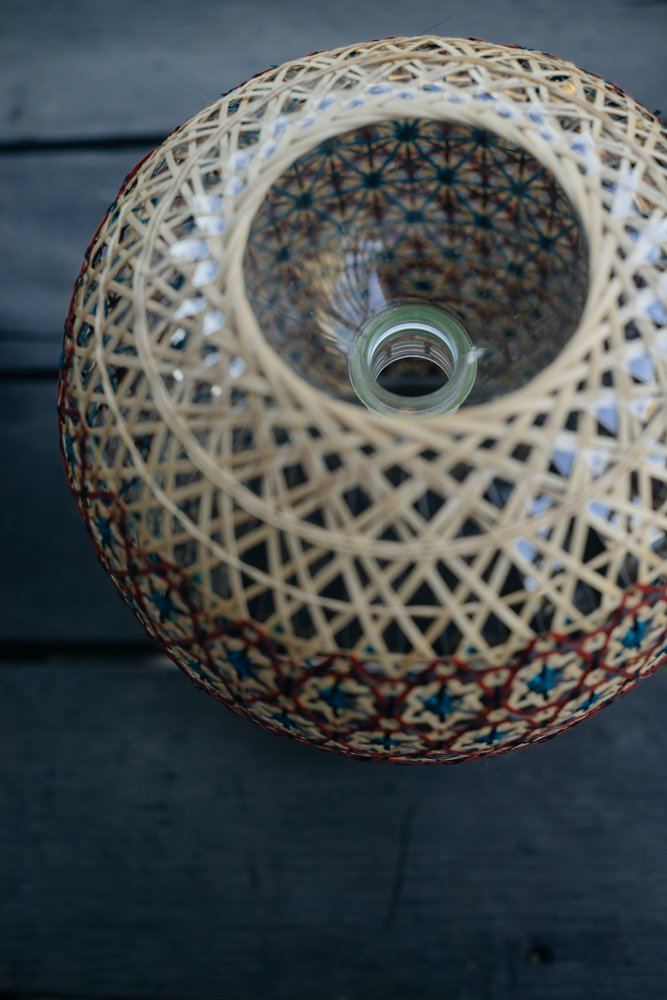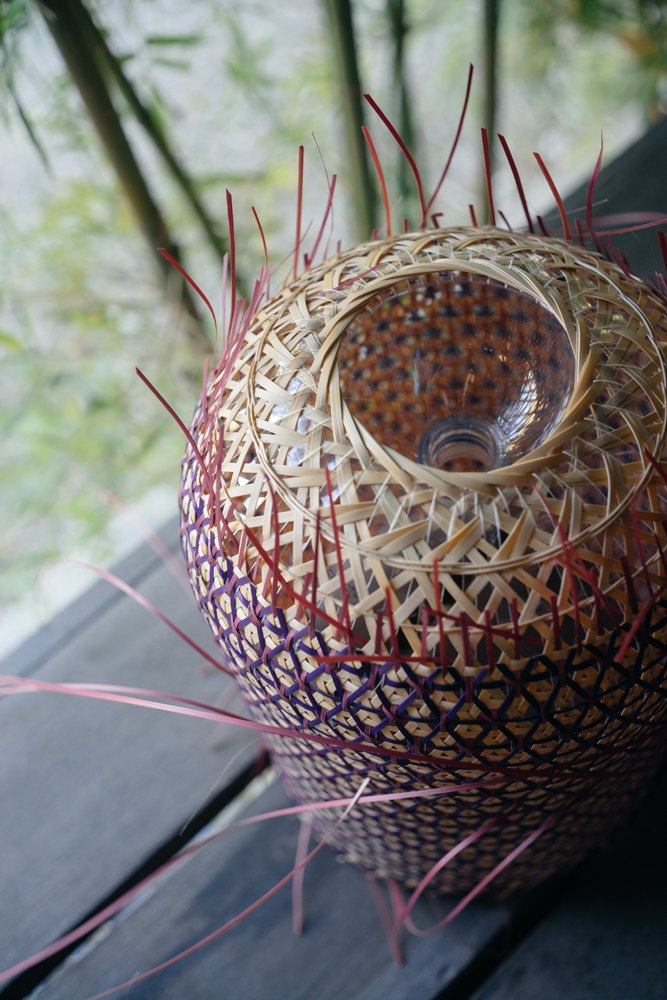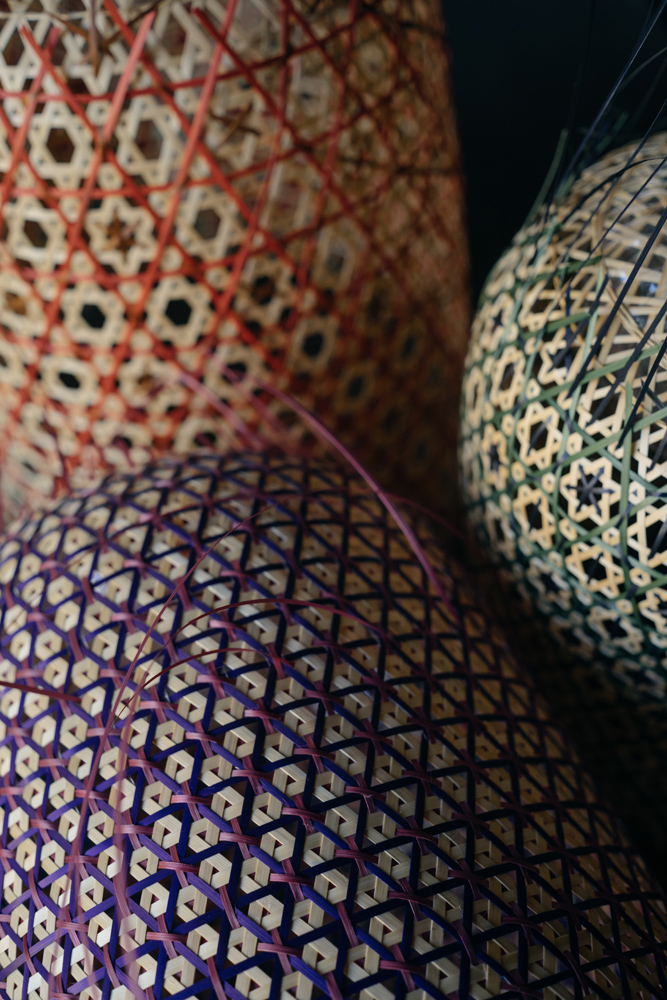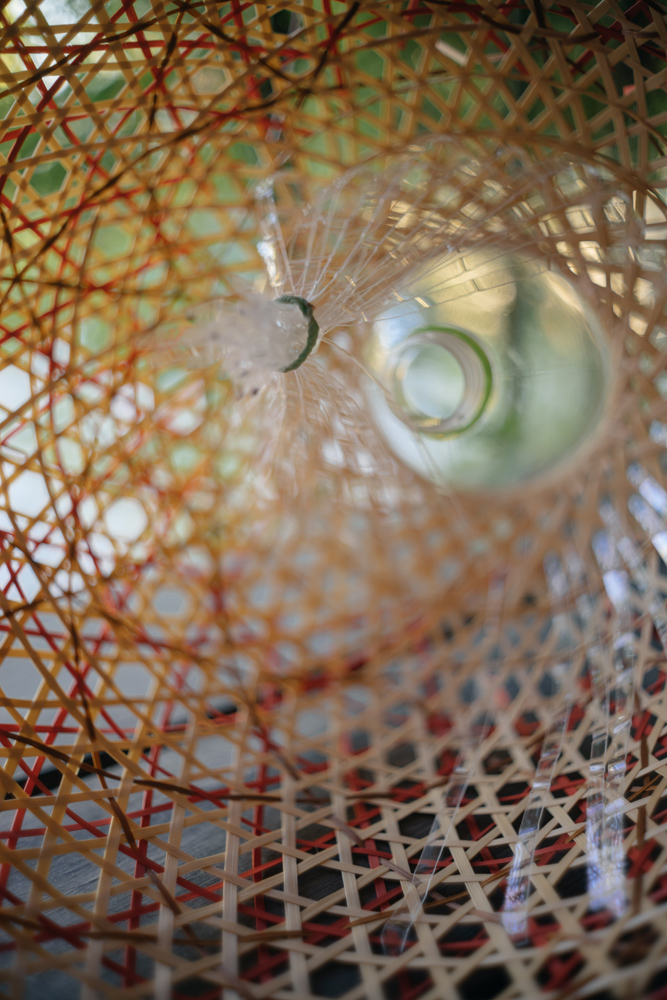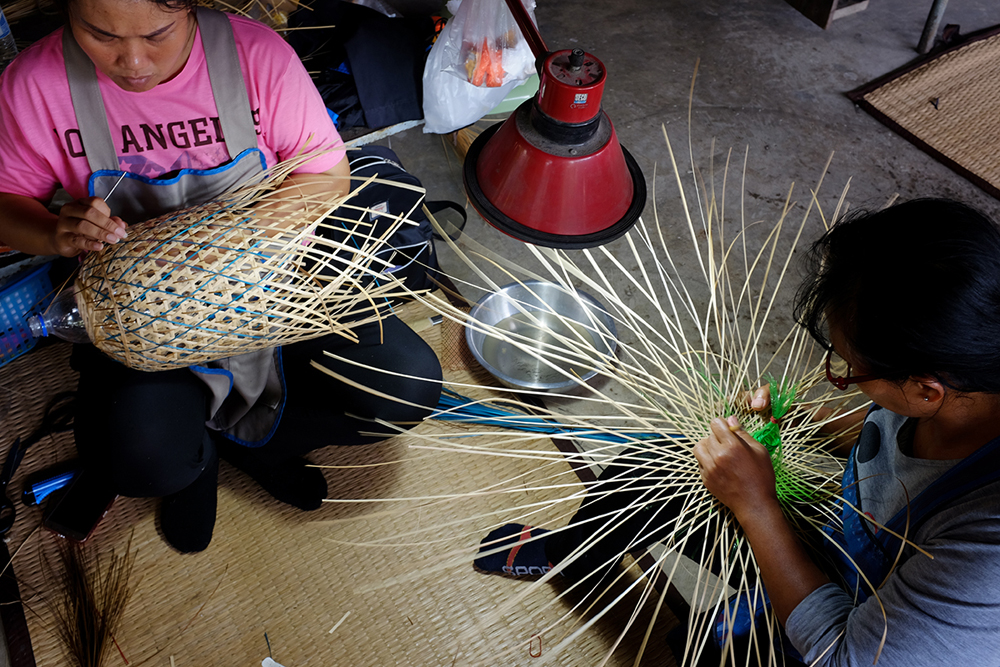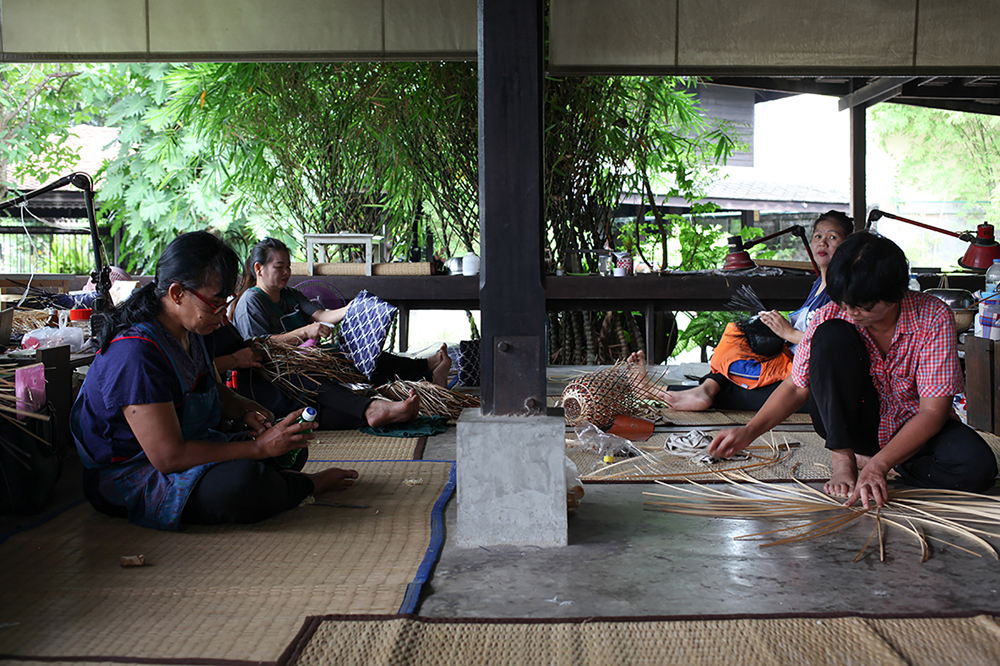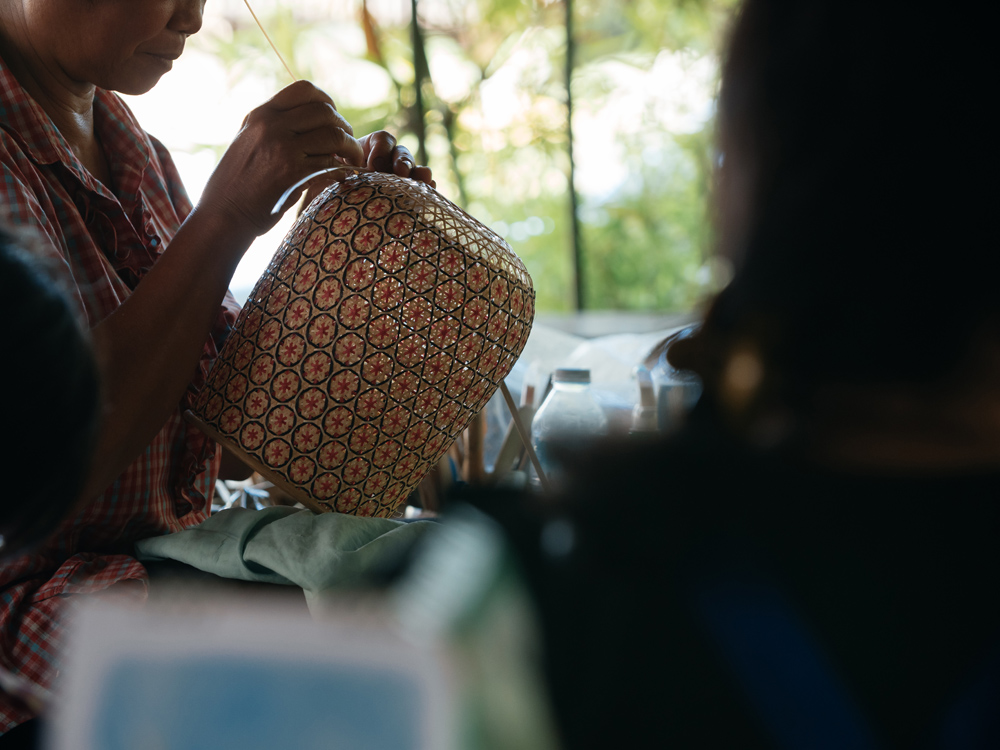PET Lamp
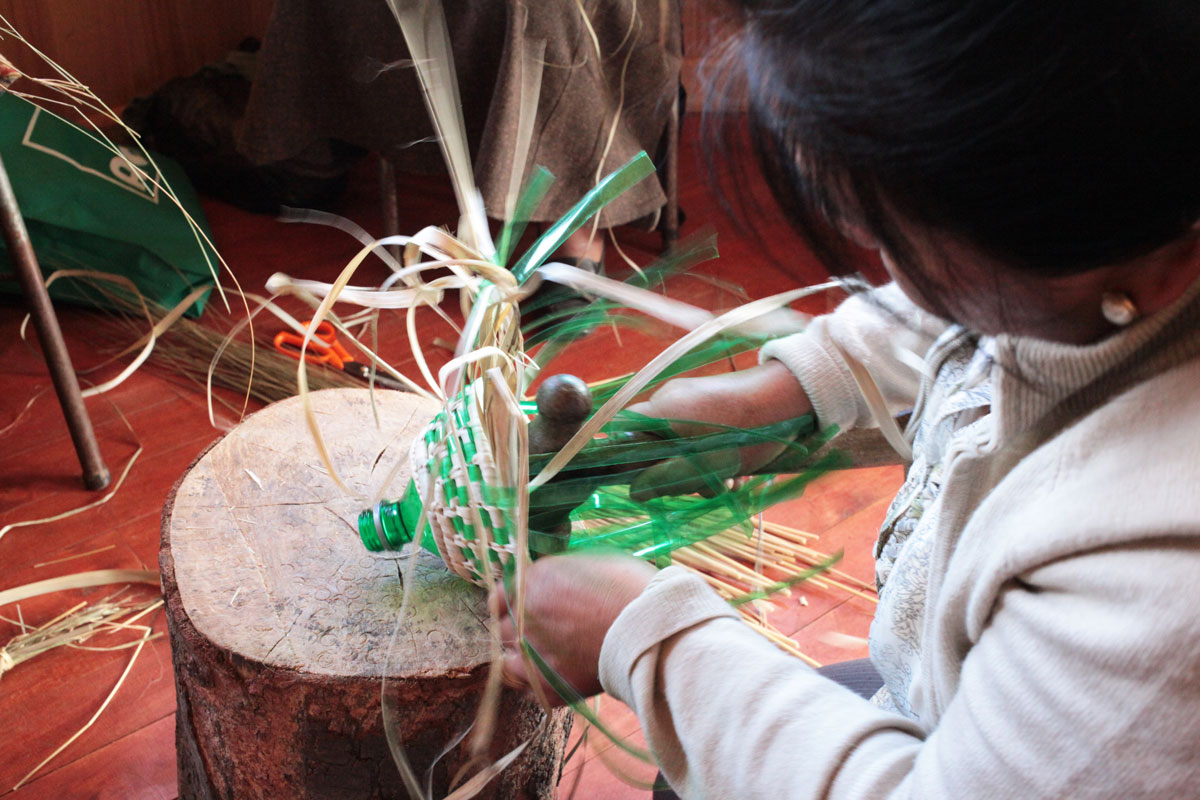 Concept
Concept
Back in 2011, Alvaro Catalan de Ocón took part in a project focused on the reuse of PET plastic bottles as a way of addressing the plastic waste issue that was happening in the Colombian Amazon. As an industrial engineer, his starting point was focusing on the deep contradiction that is hidden behind each PET bottle: a product with a very short lifespan that takes decades to decompose. Alvaro reconsidered the role of the plastic bottle by merging local weaving techniques with industrial lighting. At this moment, PET Lamp is a consolidated project in different communities of artisans worldwide, which enables tradition and local culture cosmogony to be reflected on the final product.
The PET Lamp started as an awareness project, strongly linked to the PET bottle reuse. Over time it unfolded also as an anthropological study of different indigenous weaving traditions, underlining the role that craft knowledge can play in local culture, and accentuating preservation of craft knowledge and tradition.

Concept Inspiration
The starting point regarding how to manipulate the bottles came from analysis of the bamboo stirrer from the Japanese bamboo tea ceremony since both objects had many elements in common: they are both made from a single material and made in one piece. Furthermore, regarding the form they have a structural element (the knot of the bamboo) and a flat surface that can be spun. Weaving on this warp, the piece acquires and maintains its desired form.
Analysing the bottle as an industrial piece, we can see in it traces of its maunfacturing process. Therefore, the lines where the molds meet serve as horizontal and vertical references for cutting and spinning.
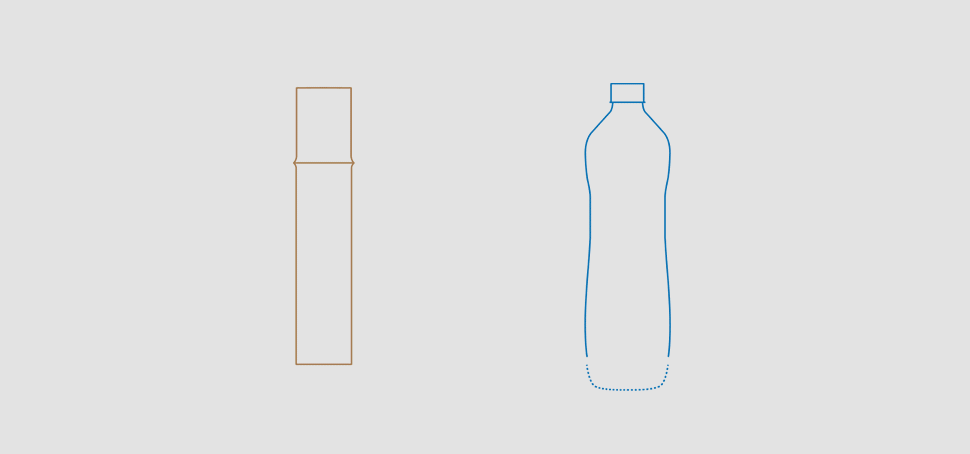
PET Lamp Colombia 2012
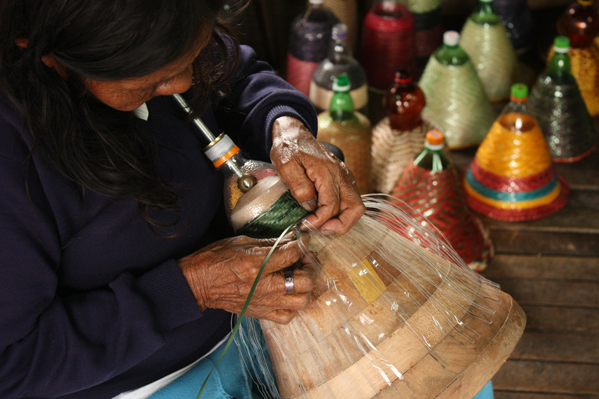
Colombia was the origin and inspiring country of this project, so we could say that is chose us. Colombia boasts an abundance of nature and is the second most biodiversified country in the world. The topographical conditions of the Amazon and the Andes, added to the prolonged political conflict, have created a specific social phenomenon where different cultures and migratory groups have remained isolated, developing particular and exclusive artistic traditions and customs.
Through the association Artesanías de Colombia, an organism dedicated to the diffusion and preservation of the traditional crafts of Colombia, we had the opportunity to collaborate with groups of artisans from the Cauca region who had been displaced by guerrilla war to Bogota.
We developed the workshop together with two distinct ethnic groups, the Eperara-Siapidara and the Guambianos, throughout the month of August 2012. The artisans freely apply their symbolic drawings and patterns and choose the colours they will weave with. This makes every single lamp an unique piece and a new project in which the artisans have the opportunity to express their cosmogony. We worked with two natural materials: “paja tetera” fibre and wool and cotton.
PET Lamp Chile 2013
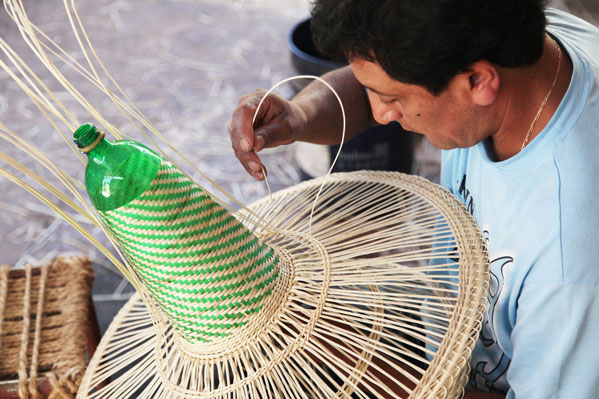
Our experience in Chile is an ongoing project since 2013 when we first discovered the so-called “wicker capital”, Chimbarongo. The pleasant climate and the fertile soil render the central region of Chile into an ideal place for the production of the various natural fibres traditionally used in basketry. This has culminated in the creation of an important annual fair where regional craftsmen exhibit and sell their most advanced and complex wickerwork creations.
In Chimbarongo, we found a whole activity and economy based on handcrafts exportation, which lead to the creation of little individual workshops of professional artisans. We have witnessed the harvest of wicker, its storage and previous preparation to the weaving labour. Chimbarongo lamps were woven by men, since wicker stems are quite rigid and a great strength is needed. In addition, Chilean artisans have developed their own tools in order to calibrate the width and thickness of the wicker stems so they harmoniously join the plastic stripes of the PET bottle. The only difference between Chimbarongo lamps is their shape and density of weaving, since all artisans mainly preserve the wicker natural colour.
PET Lamp Ethiopia 2014

In 2014 PET Lamp jumped to the continent of Africa, touching down in Ethiopia, the cradle of mankind and a meeting point of cultures and religions between continents. Suddenly, we found ourselves face to face with a unique country within a complex African jigsaw puzzle. It is a richly varied country, full of contrasts as much in its geography as in its cultures, its traditions and its personality. The colourful basket weaving of Ethiopia has a long tradition and plays an important role in the culture and society of Ethiopia and its crafts are seen as functional, decorative and sacred elements throughout the country.
This is how the traditional Ethiopian craft brought us to Addis Abeba, one of the cities which plays a crucial geopolitical role within Africa, thanks to its great concentration of diplomatic delegations as well as its airport, one of the busiest in the whole continent.
Generally made by women, the design comes from their own imagination. There are no guidelines or instructions to help in the design of these intricate and colourful pieces, the women simply decide on a decorative pattern and apply it from memory. The skills of basketmaking are passed down through the generations from mother to daughter.
The materials used are usually grasses and palm leaves which are dyed with other natural materials.
This activity fulfills a social purpose since it strengthens the community linkages. We have mainly worked with mothers of twins, a very stigmatized category of women in Ethiopia. The workshop and the ongoing project suppose for them a kind of reinsertion and social recovery which allow these women to practice their weaving skills and preserve them in order to transfer the traditional techniques to the next generations.
PET Lamp Japan 2015
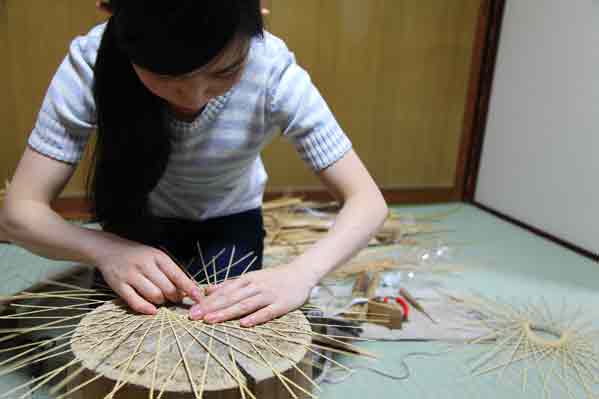
Japan provided us one of the most inspiring experiences since we approached a different culture and professionals who treat their pieces as masterpieces or pure artworks. Since ancient times, bamboo has been an essential material in tea ceremony, construction, tools manufacturing, as its durable and elastic nature offers strong, straight fibers that keep their shape in dry and humid conditions. Despite of the industrialization and recent plastic growing use, bamboo basketry keeps fulfilling Japanese aesthetics.
The challenge in the PET Lamp Japan project was to naturally incorporate plastic strips into bamboo basketry. The artisans struggled to pay the same care and attention to both the bamboo and artificial, slippery plastic. The intention was to show off the colourless, transparent plastic common in Japanese bottles, while maintaining the right balance of both materials to preserve the delicate characteristics of Kyoto’s fine crafts. The bottles’ necks were incorporated upside down to achieve the same purpose.
Each Japanese handcraft, more similar to a piece of art, is thought and designed as a unique product and reflects the artisan´s personality. Every artisan calibrates his bamboo stripes by using a special tool and works with wet bamboo, in order to gain flexibility, just as Chilean artisans do.
Traditionally, bamboo basketry artisans apprentice under a master artisan for up to ten years before pursuing their own work. Currently, there is a new tendency among young artisans who opt for a self-teaching process and enter this industry as independent craftspeople and tt is with these artists who we collaborated with. The Japan project has given us the unvaluable experience of spending time with these extremely honest artisans hoping PET Lamp has also been able of leaving a trace on them opening new doors.
PET Lamp Chile 2016
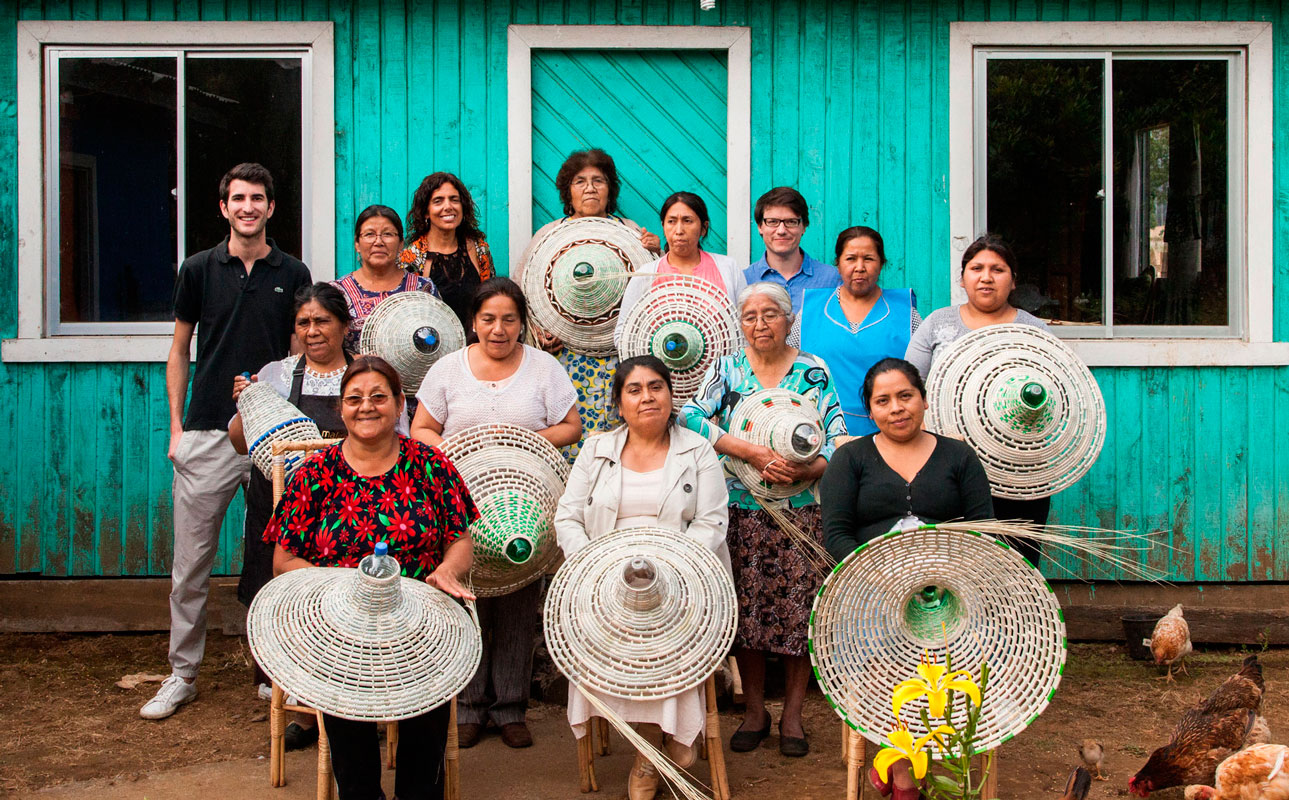
Later, in 2016, we felt attracted by the sobriety and lack of ornamentation of the basketry of the Mapuche people and of the sober and discreet character of Chile’s Central region people, strongly connected to the land and to the cycles of nature. More than 400 km south of Chimbarongo, at the heart of the Araucania region, home to the native Mapuche people who undergo a slow process of integration with the rest of the country we have found a group of women eager to move forward and to share their valuable traditions with the rest of the world.
The Mapuche collection was entirely created by women belonging to the community of Ñocha Malen. By using ñocha natural fibre and ancient techniques preserved for 500 years, these women print their stories and dreams in every piece they create.
The workshops taught us again all necessary steps until the final piece. The artisan women use a natural fibre called ñocha. They collect it, then boil the leaves and dry them. It is now when ñocha fibre is ready to be woven and shaped as desired.
On the other side, the artisans started by learning and practicing the PET bottle cutting; they continued to weave the PET strips and the vegetal fibre. They used a wood mold in order to preserve the given shape and added a last band with gaps in the woven material.
The first workshop achievements were the proof that hopeful projects can be born in a stigmatized conflict-affected area and contribute to improving the image of such a beautiful region.
PET Lamp Australia 2017

In 2016, PET Lamp is commissioned by the National Gallery of Victoria in Melbourne with the support of Vicki Vidor OAM and Peter Avery, in order to develop a co-design in collaboration with Indigenous artist weavers. Seeking out one of the best-conserved traditions and the most suitable weaving technique, we chose the remote community of Ramingining in the Northern Territory. The final pieces are the fruit of six intense weeks of a workshop and living together with a group of talented Indigenous artist weavers from Bula’Bula Arts Centre in Ramingining.
During our six weeks-long immersion in the Aboriginal cultural heritage, a whole universe of specific kin relationships and ancestral rules have been revealed to us and served as inspiration for the evolution of the project towards a social, collaborative work.
The final pieces have been constantly nourished by the Indigenous artist weavers’ genuine reality, the Aboriginal wide array of kinships and our previous encounters with the Aboriginal paintings. Discovering “Yukuwa” (Feather string yam vine), 1984, an artwork by Frances Djulibing, also served as the conceptual starting point for bonding together the lampshades.
Our very first encounter with the duality of the country where we were going to develop this part of PET Lamp project was while researching different Australian maps. In a night satellite view we could see concentrations of inhabited areas along the coastline, giving the sensation of an empty inland territory.
To our surprise, a second satellite map revealed plenty of lights throughout the inland area, as a sign of the supervised fires the indigenous people manage inside the bush. The two parallel forms of life inspired us to create a sort of imaginary Australian map, where the PET plastic bottles represent the urban cores and the weaving recalls the Aboriginal reality.
As usual, the workshop consisted of developing all necessary steps until the final piece, such as collecting the PET plastic bottles, the natural Pandanus fibres, and roots and dying them with these natural pigments. At the very beginning, the Indigenous artist weavers started working on their own individual lampshades, creating circular figures based on their traditional mats.
One of the artist weaver’s personal story about her twin brother and her dual life vision inspired us to create new bonds. Therefore, the distribution of the lampshades meets the interpersonal ties as well as the imagery of a topographic map, as it is imprinted it with numerous graphic symbols from their characteristic paintings such as concentric circles, meandering lines and U-shapes. To the characteristic fringes of their mats, we decide to add some extra Pandanus fibres in order to merge the individual pieces together.
The result of the workshop was two unique Bukmukgu Guyananhawuy (Every family thinking forward) lampshades, exploring one of the purest and best preserved Aboriginal traditions, visual languages and weaving techniques in the heart of Arnhem Land, Northern Territory. One of them belongs to the permanent collection of the National Gallery of Victoria and the other to PET Lamp Studio in Madrid.
For both masterpieces, we designed a complex system that fulfills both hanging and lighting purposes. As a sign of respect to the piece, the applied system has a non-aggressive and reversible intervention. We aimed to subtly integrate the system and adapt it to the textile visual language of the piece in a way that the lampshade keeps being the protagonist. Therefore, the lamp is not a conventional light source, but an illuminated object which offers a revealing shadows play on the ceiling and a new perspective of the complexity of the material.
PET Lamp Thailand 2018
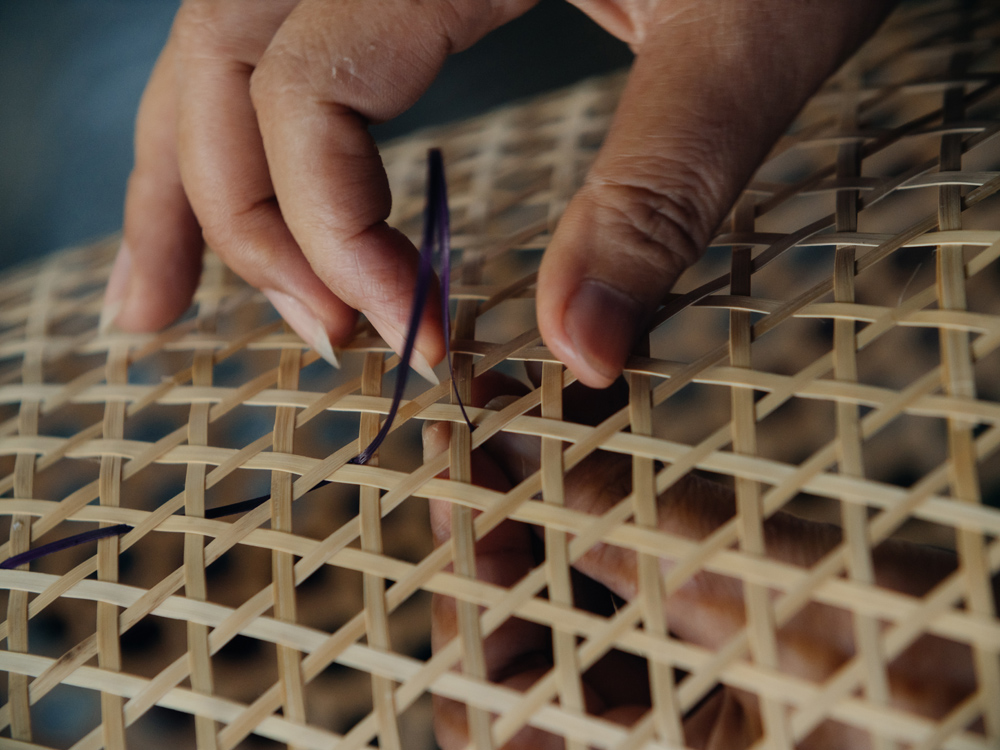
In 2018, Thailand was the country in charge of interpreting our technique to turn PET plastic bottles into lamps.Thailand is the second country where bamboo basketry is used by the PET Lamp project; this material and basketry technique is investigated for the first time during PET Lamp Japan development. During our stay in Japan we were invited to collaborate with the Traditional Bamboo Handicraft Center, a foundation supported by her Majesty Queen Sirikit that enjoys a distinct reputation in the field of handicrafts in the country. This is how the PET Lamp Thailand adventure begins.
After PET Lamp RAMINGINING, a joint work with Bula’bula Arts Aboriginal Corporation commissioned by the National Gallery of Victoria, extreme for its dimensions, concept and mixture of materials, PET Lamp PIKUL comes up characterized by a controlled and studied manufacturing production process.
Bamboo is the chosen material, typical of the region, is worked with precision and careful detail by the best craftsmen of the country.
PET Lamp PIKUL takes its name after Mimusops Elengi’s flower, a tropical tree found in the forests in South and Southeast Asia and Northern Australia; the flower grows
in a geometric pattern inspiring the traditional Pikul pattern which can be found in many crafts around Thailand, specially in bamboo basket making.
Thailand bamboo basketry is characterized by a controlled and studied manufacturing production process. This material requires skill and mastery, to such a great degree, that it is necessary the intervention of three craftsmen, each expert on one of the specific techniques of the manufacturing process, to make each lamp.
The first craftsman calibrates the width and thickness of the rods to give them the appropriate flexibility and thus reach the natural curvature that generates the material, thus creating a hexagonal base frame that serves as a warp on which to weave the traditional Pikul pattern.
A second craftsman introduces horizontal rods, drawing through weaving the geometric shapes and introducing color. Once the drawing is applied, a third craftsman finishes the lamp with rattan, everything must be balanced.
The charm of Thailand Basketry Tradition comes from the artisan’s calmness which is reflected through neat artwork pieces.
Pet Lamp, Spain
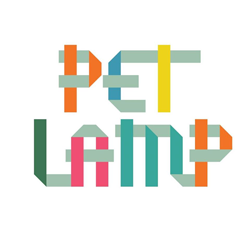
PROFILE
PET Lamp is a project that mixes the reuse of PET plastic bottles with selected traditional weaving techniques from different corners of the world in order to create unique handmade lampshades.
This initiative was founded by the designer Alvaro Catalán de Ocón after the first experience in the Colombian Amazon in 2011. The Spanish PET Lamp project was conceived in 2011. In 2012 the Colombian experience was launched and one year later, in 2013 it reached new countries and cultures beginning with Chile, next year Ethiopia and back to Chile in 2016. In 2015 PET Lamp was welcomed by Kyoto artisans in Japan. The latest journey was to Australia developing a collaboration with Indigenous artist weavers from Ramingining.

